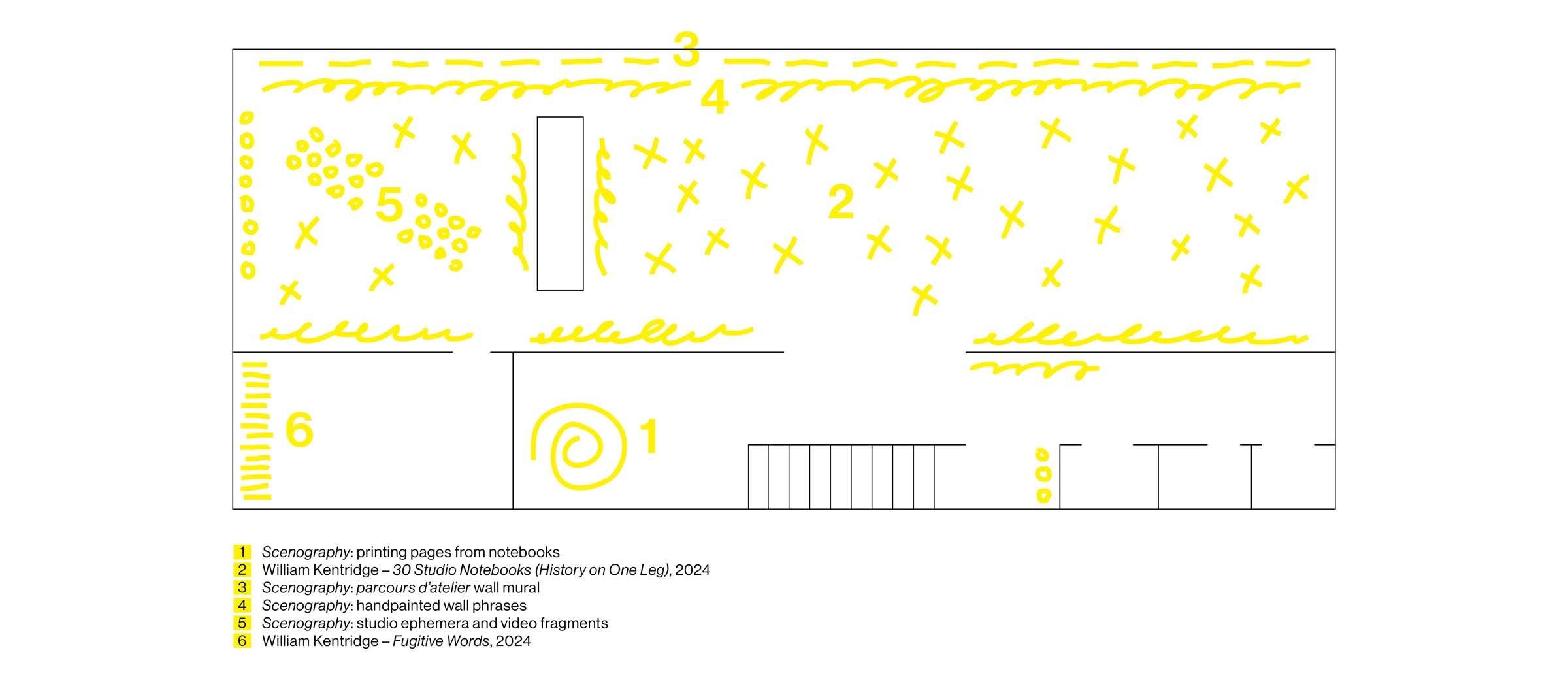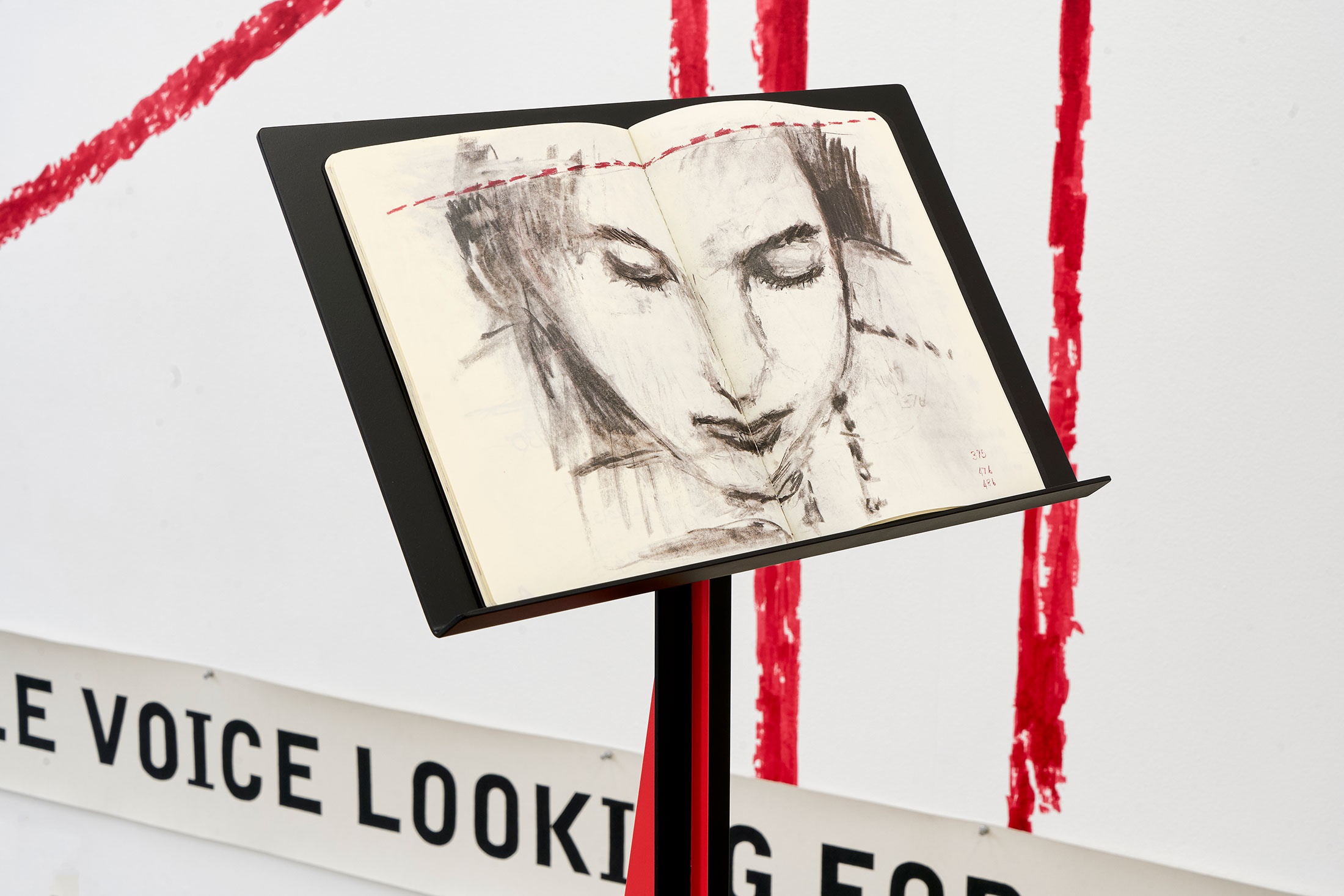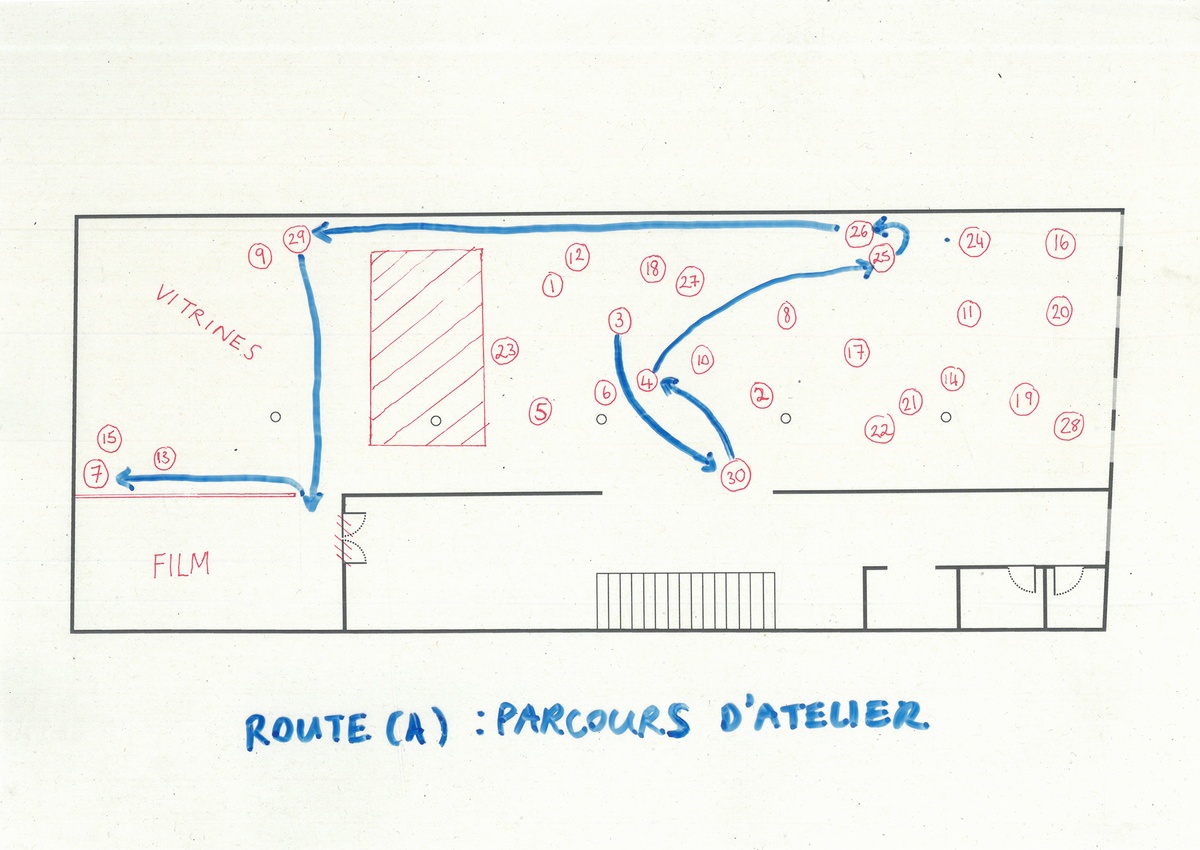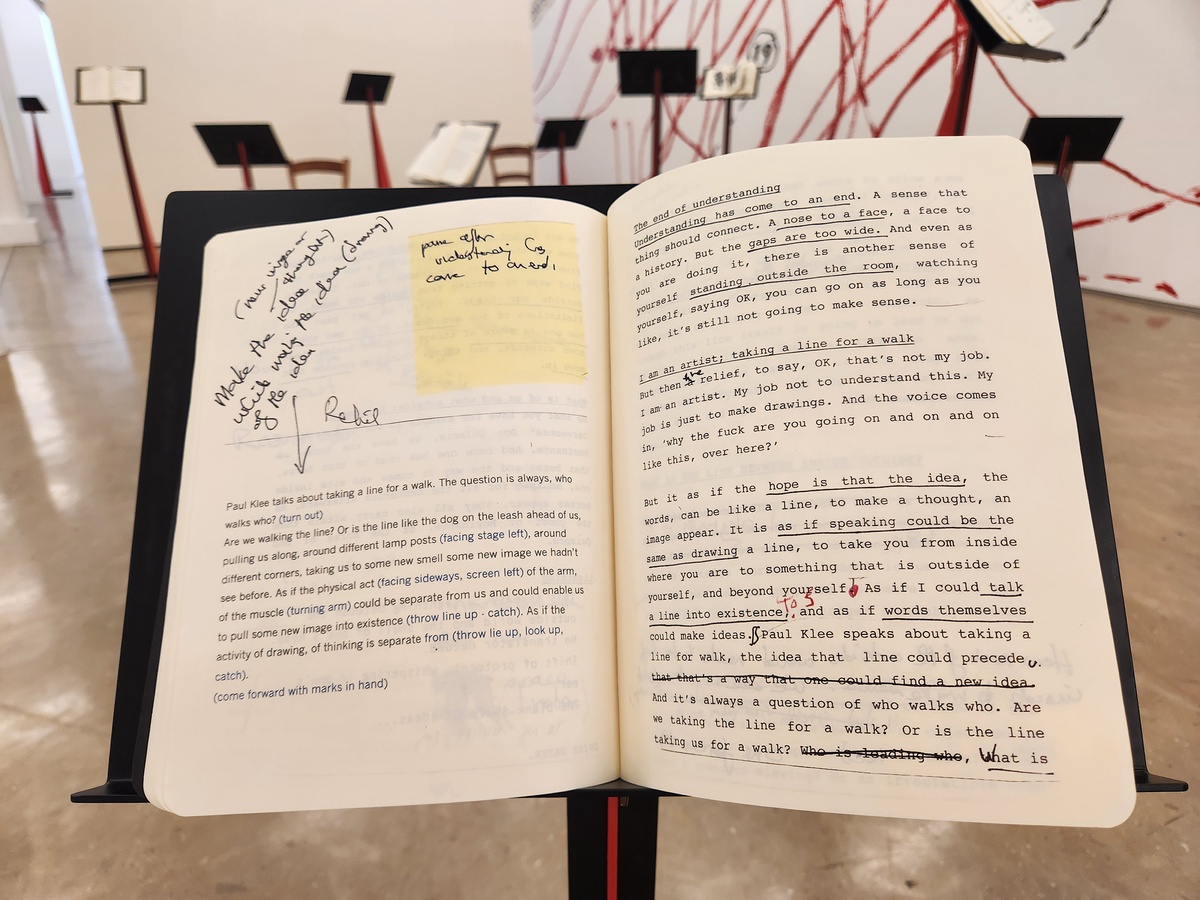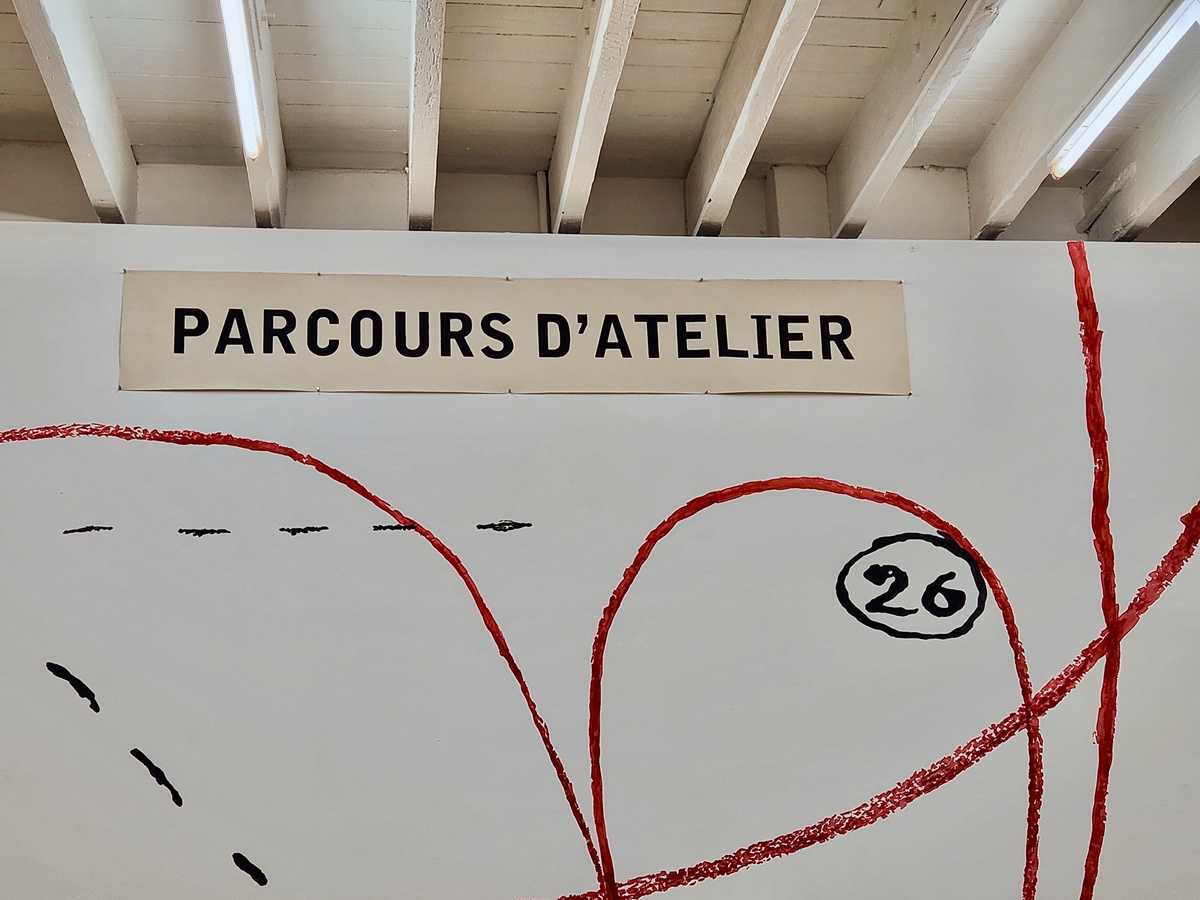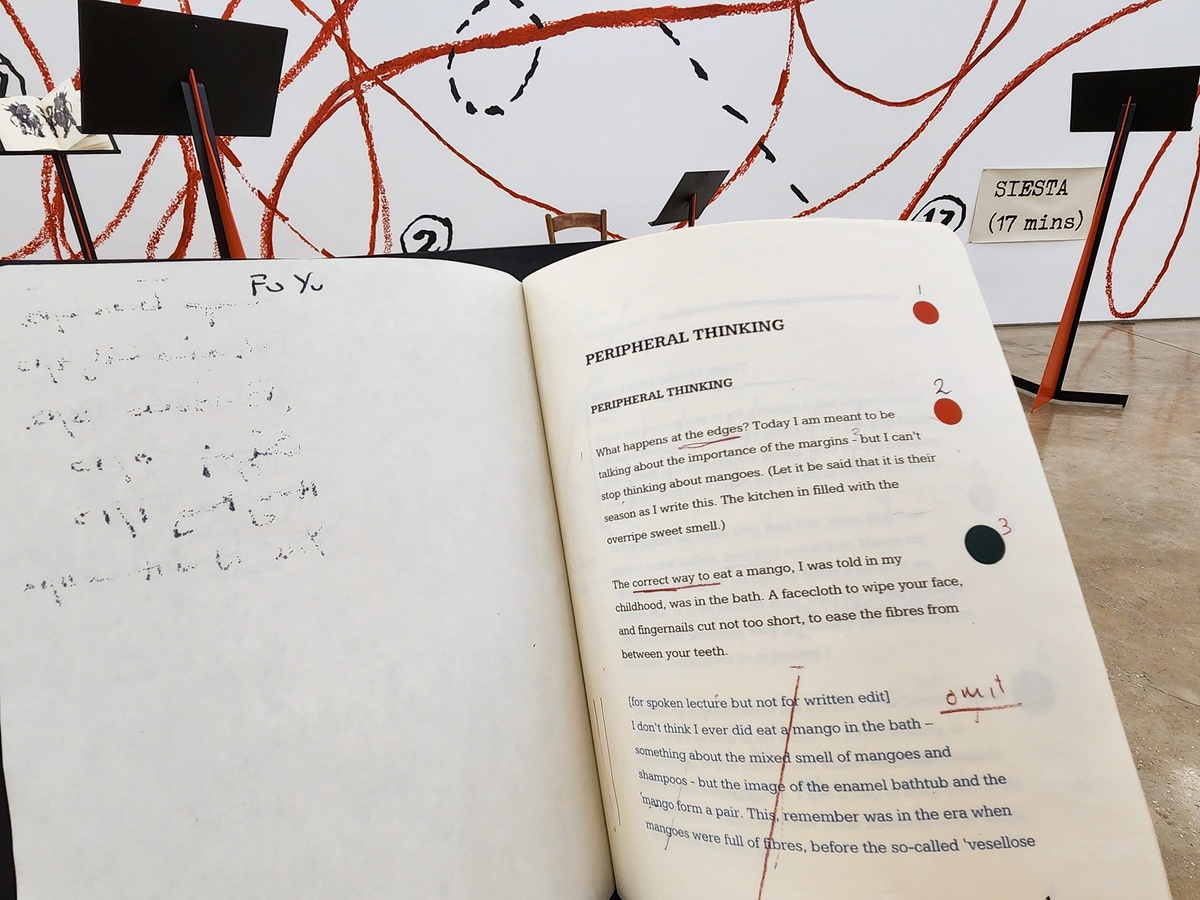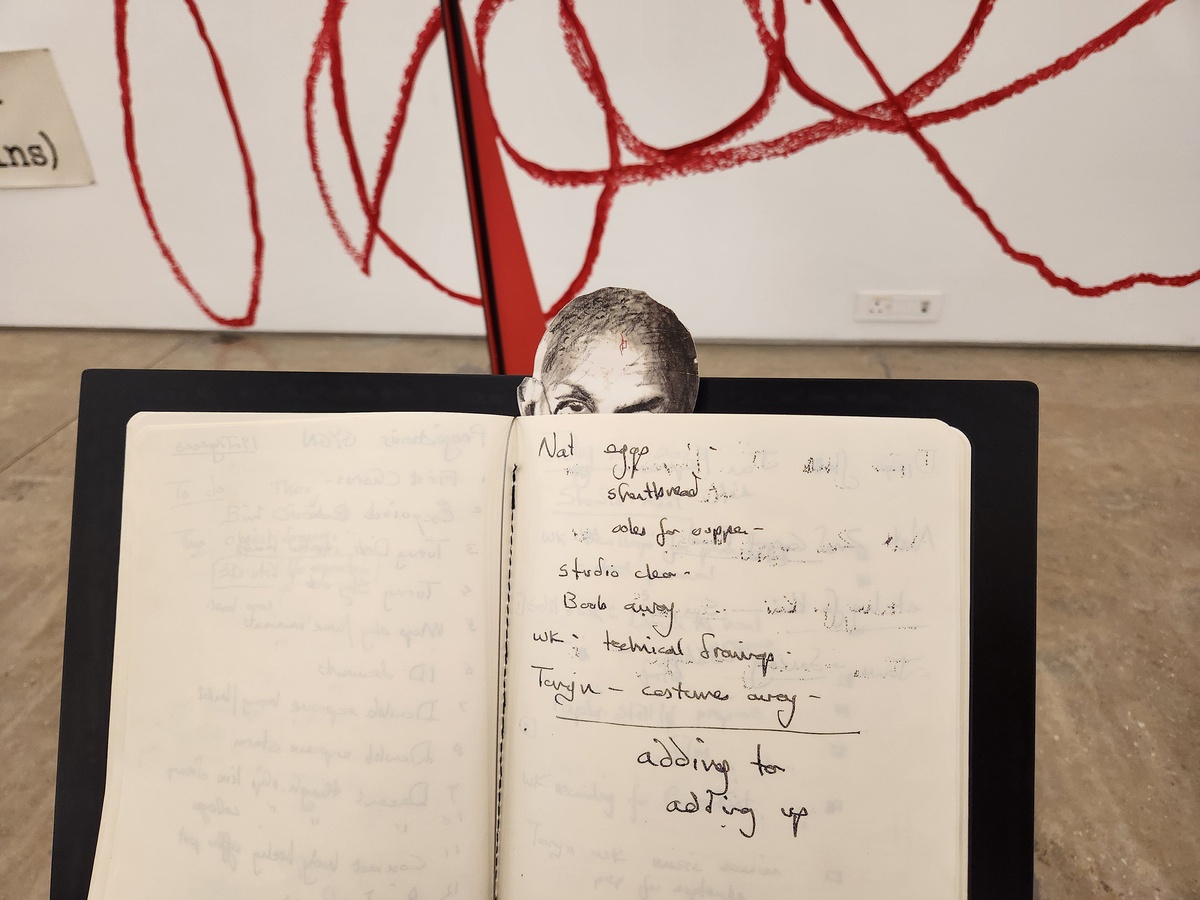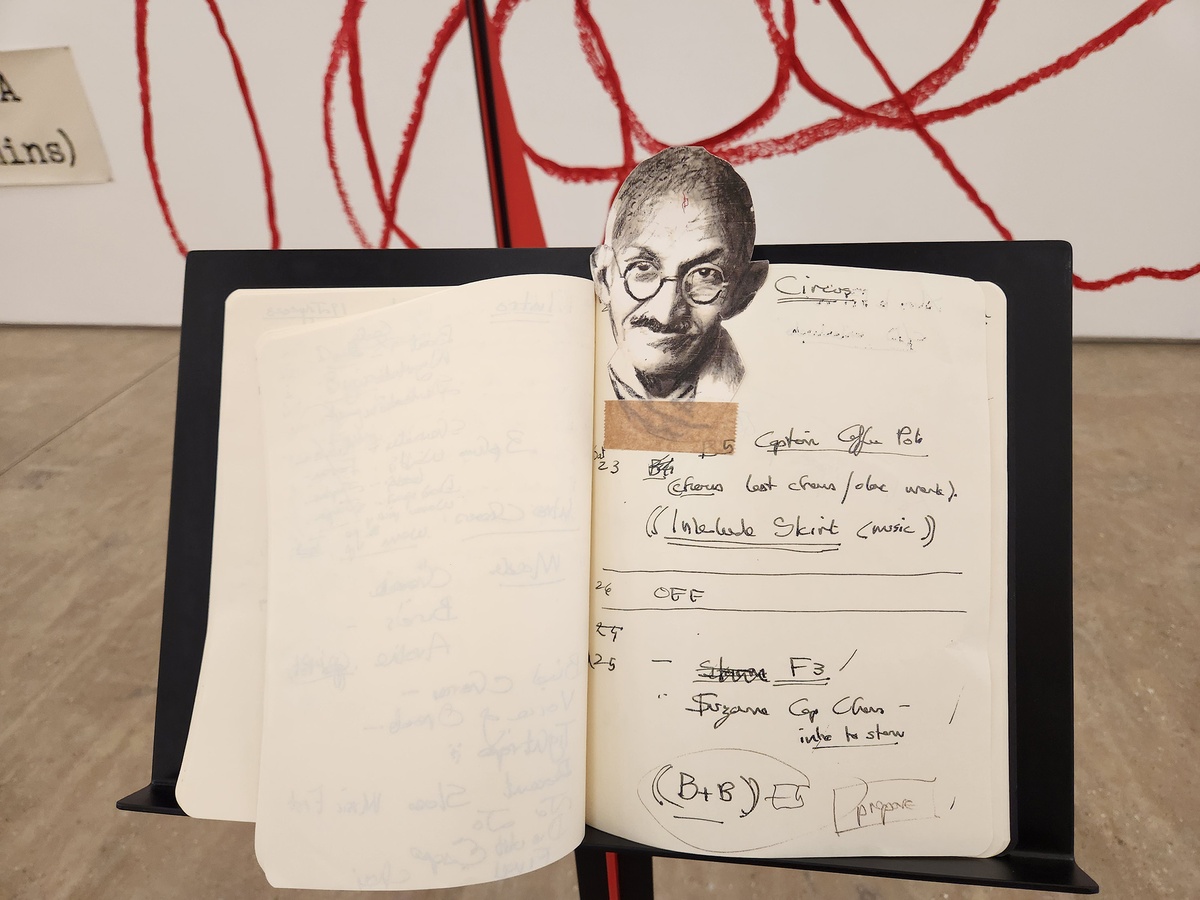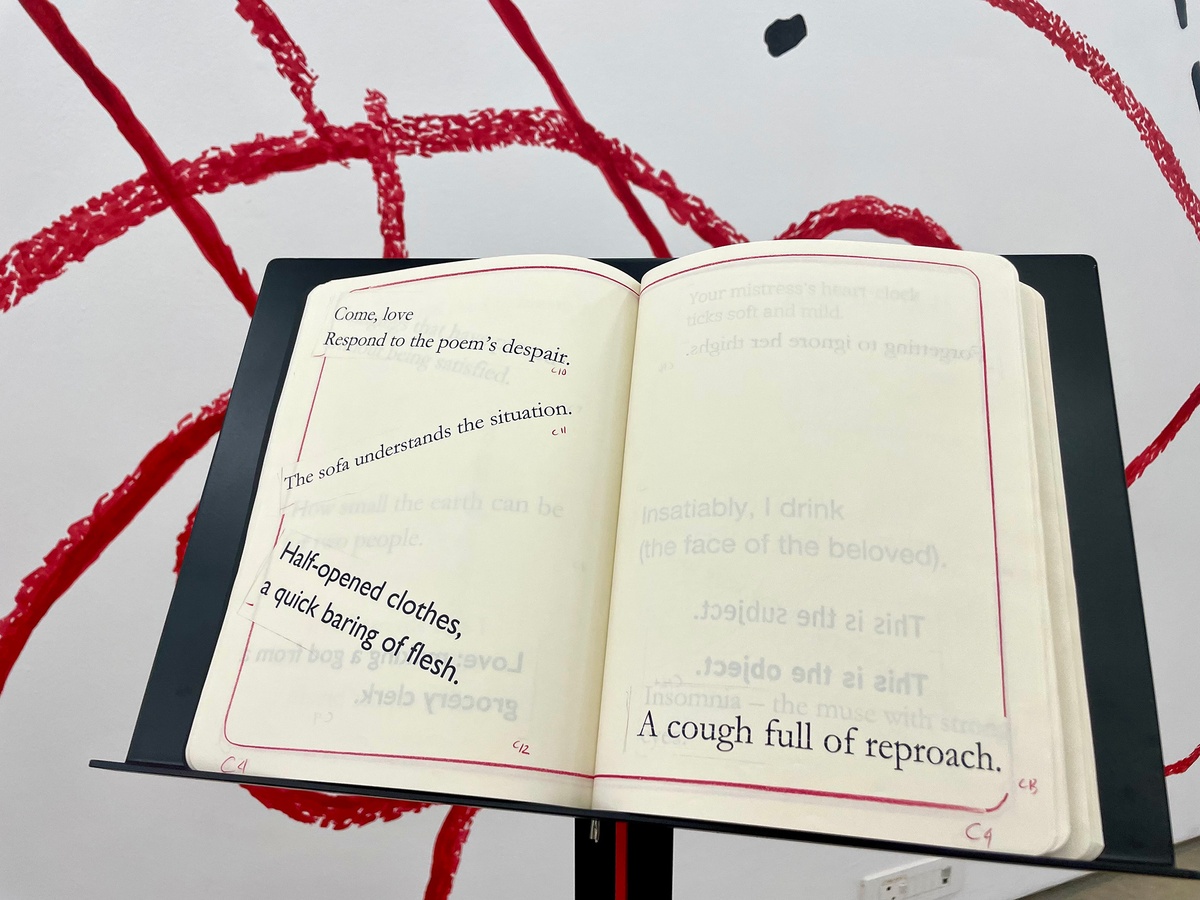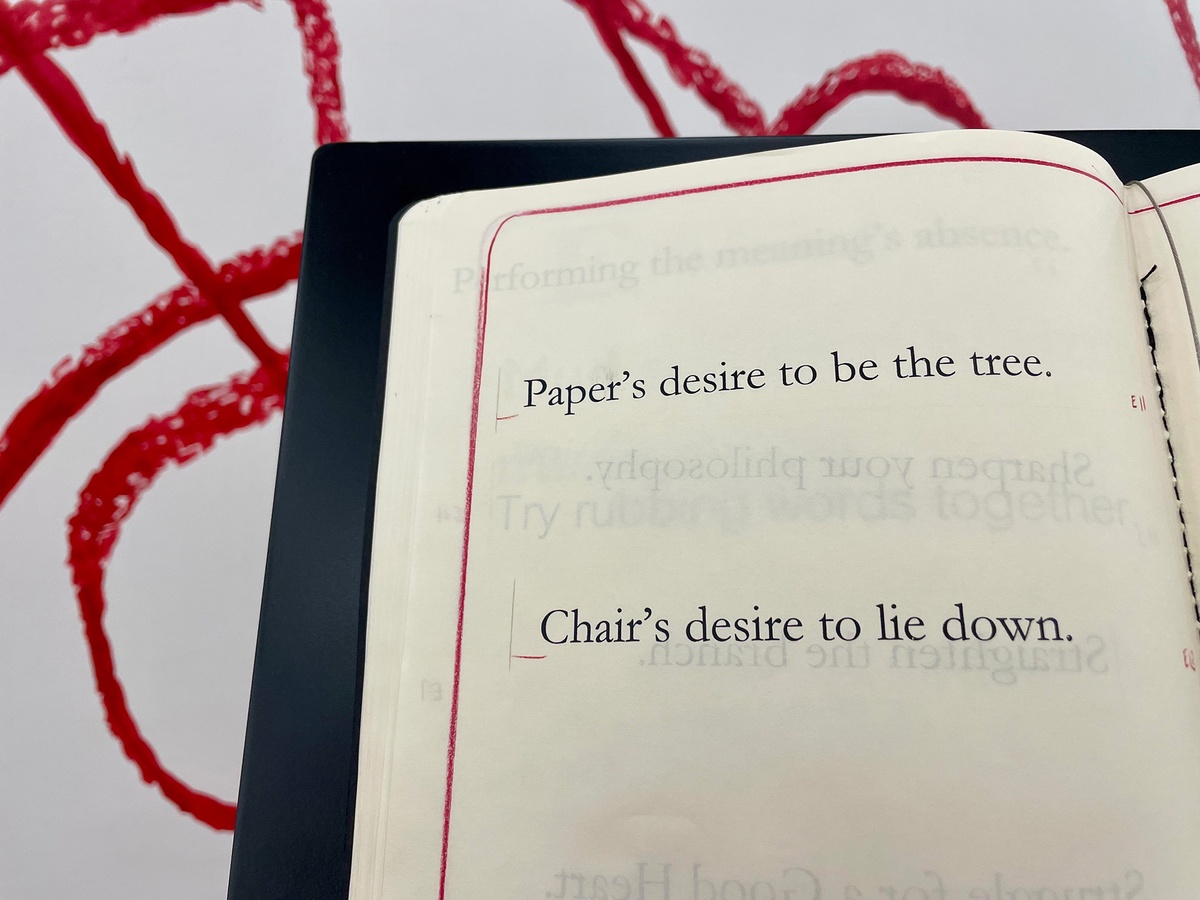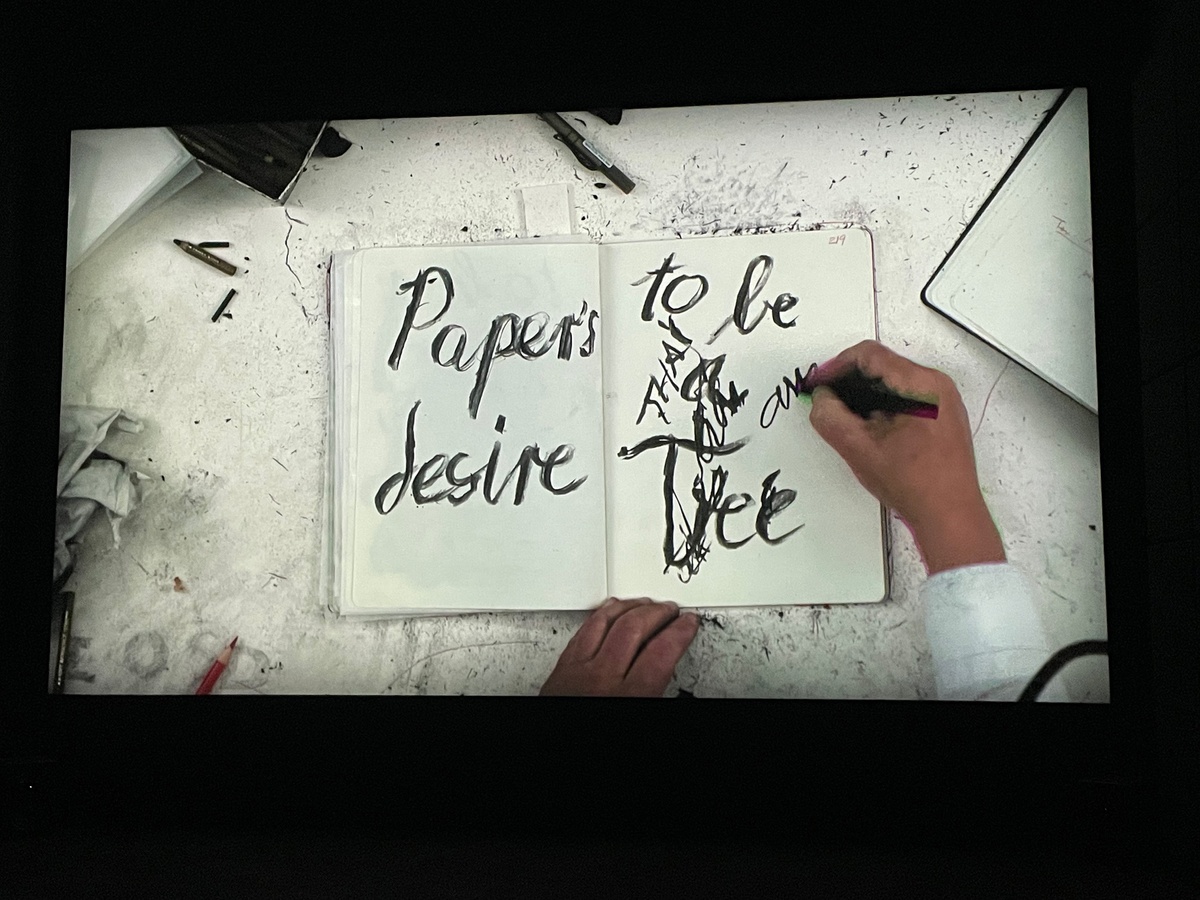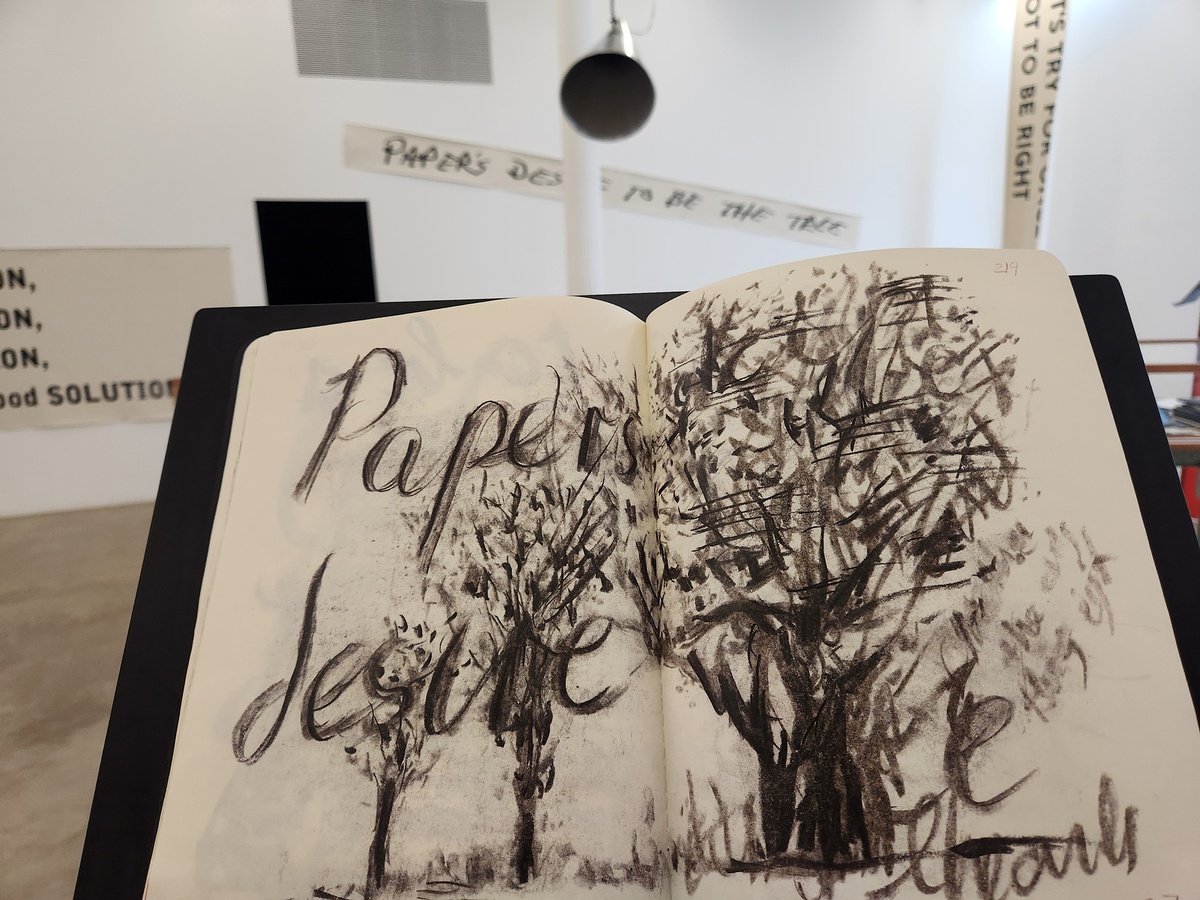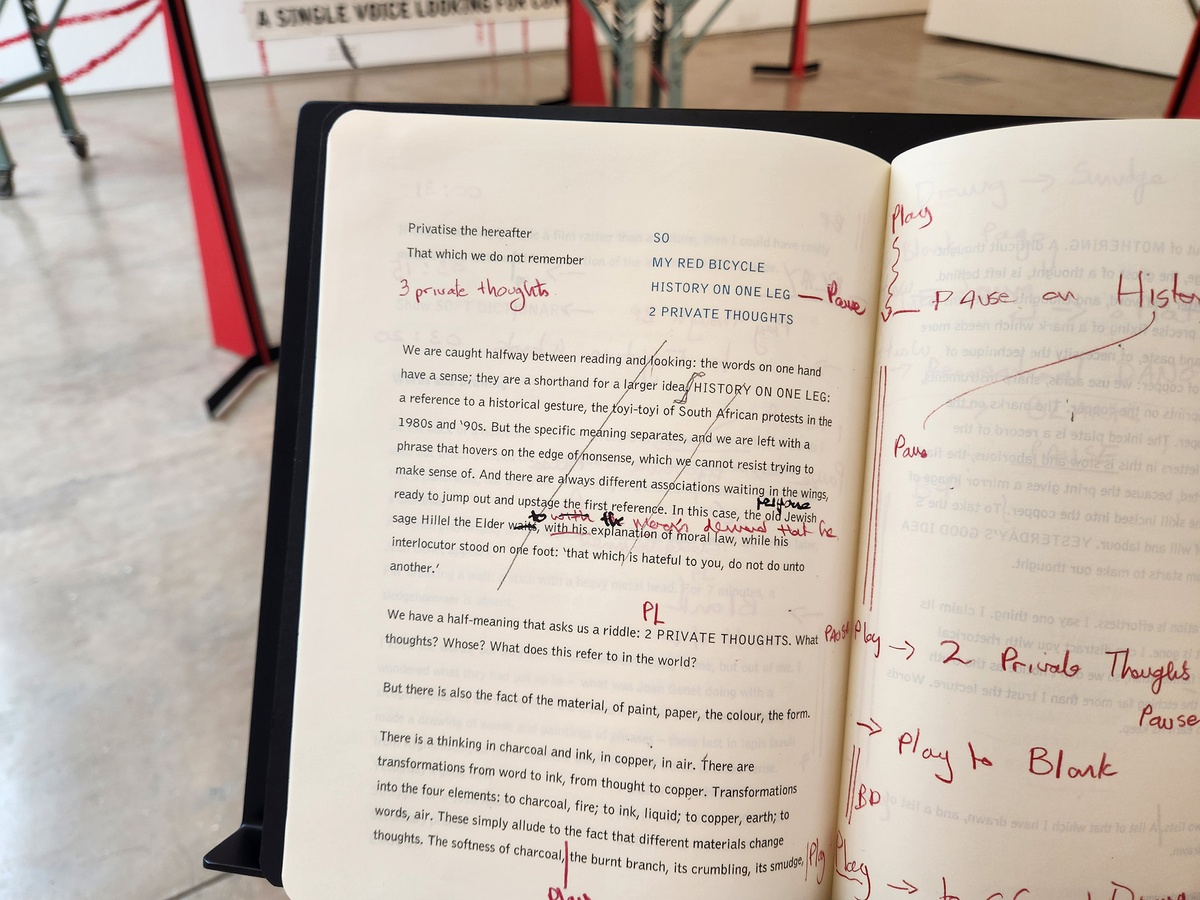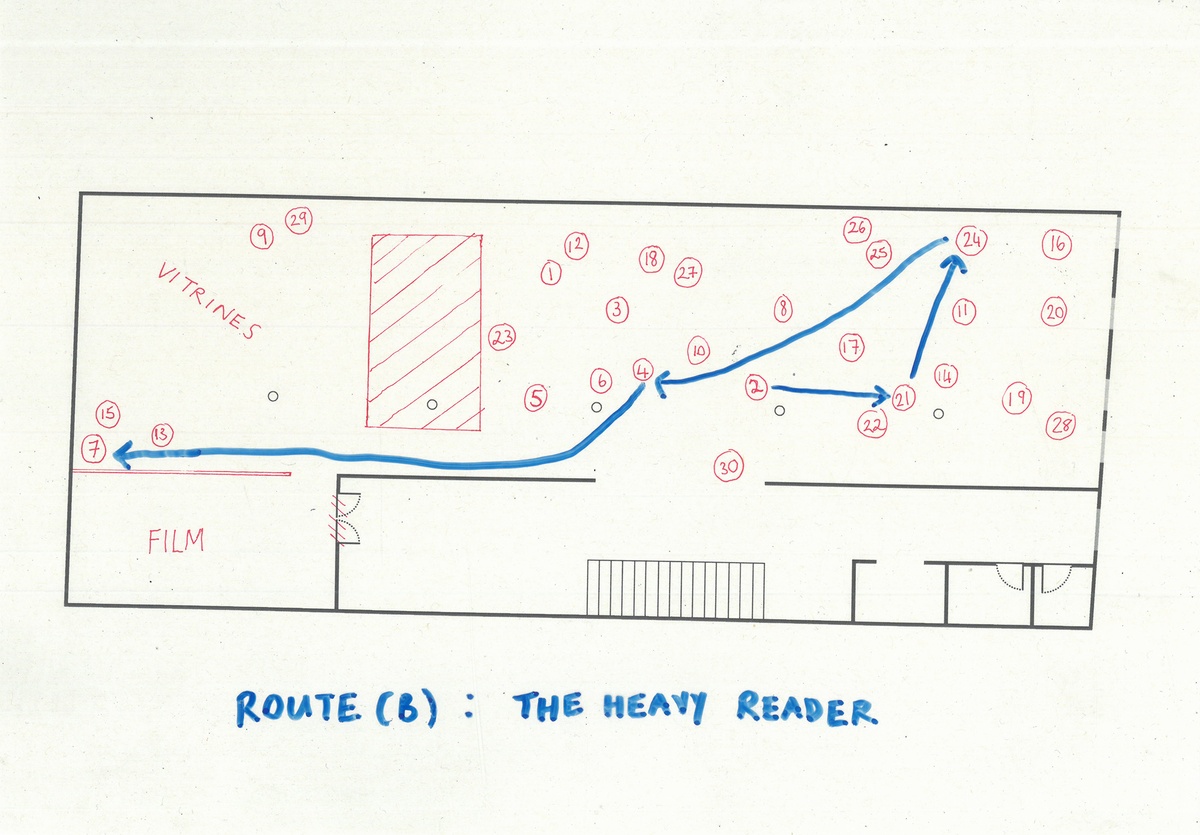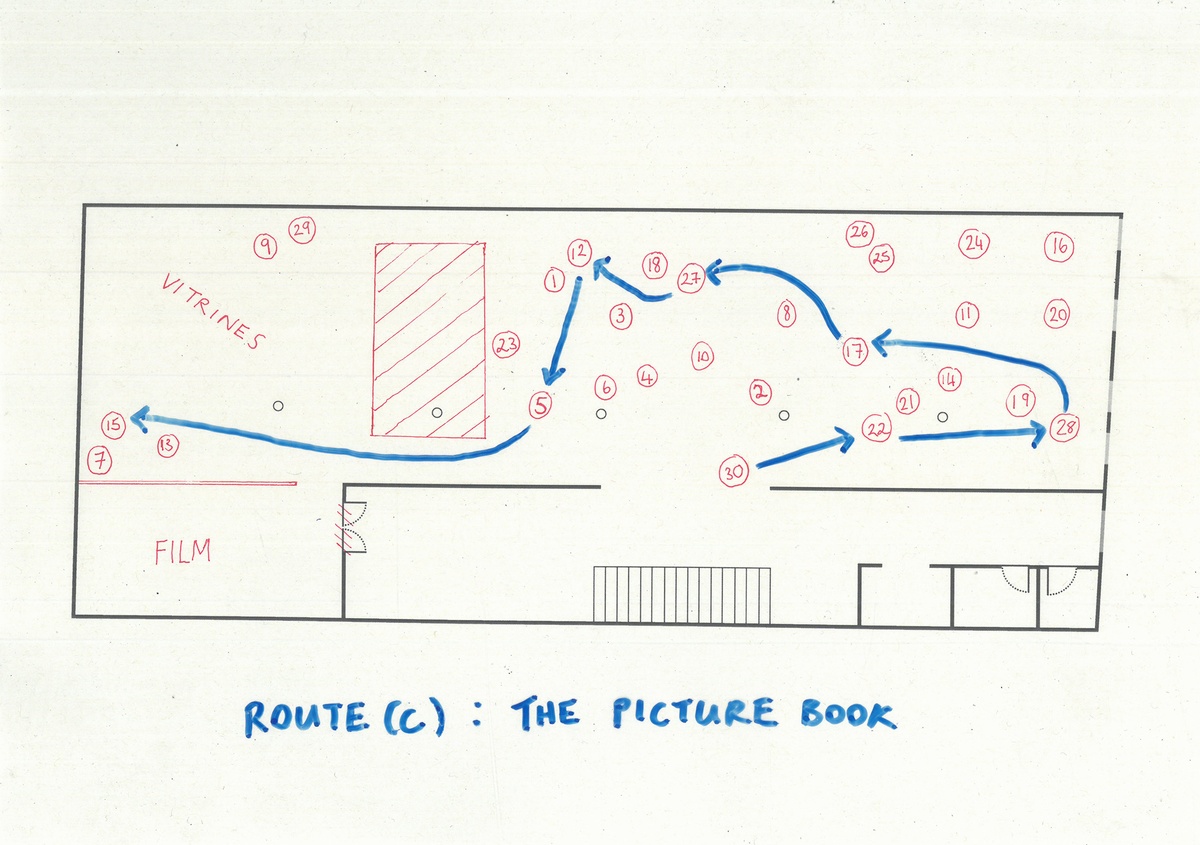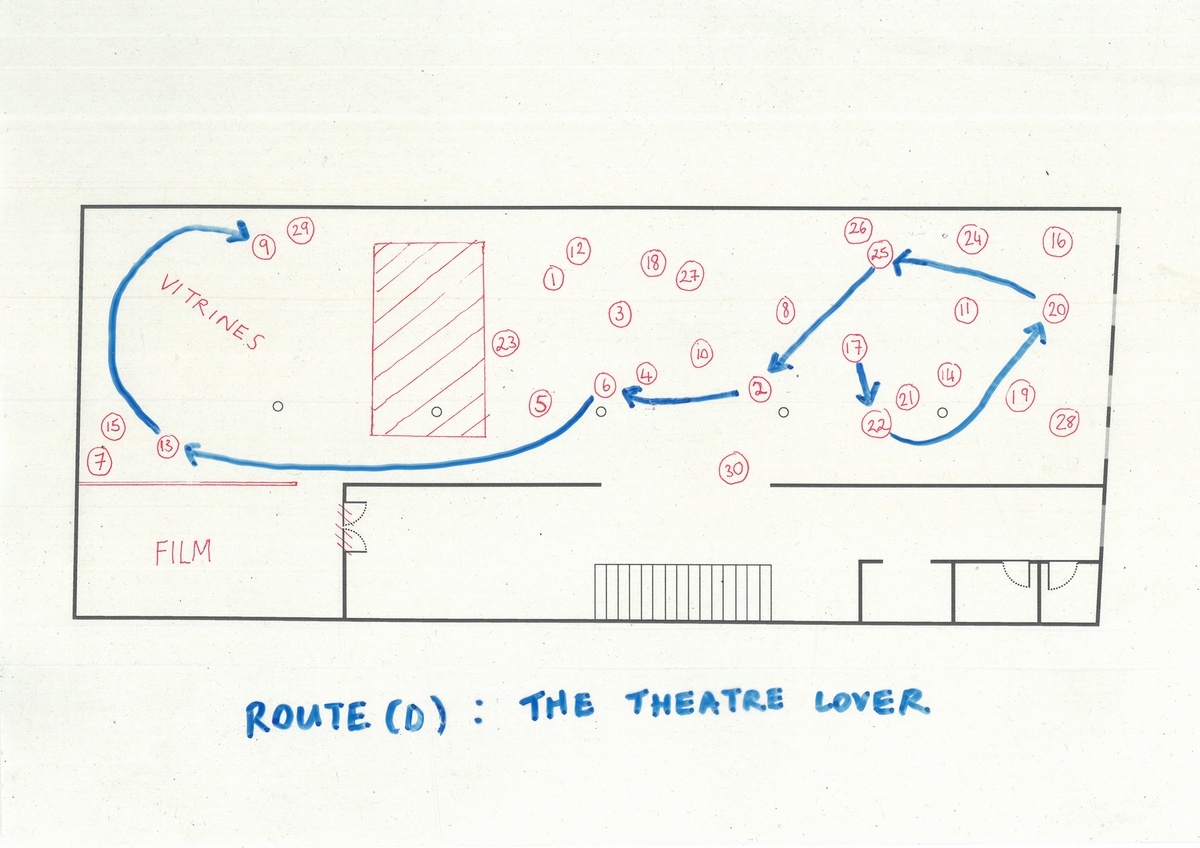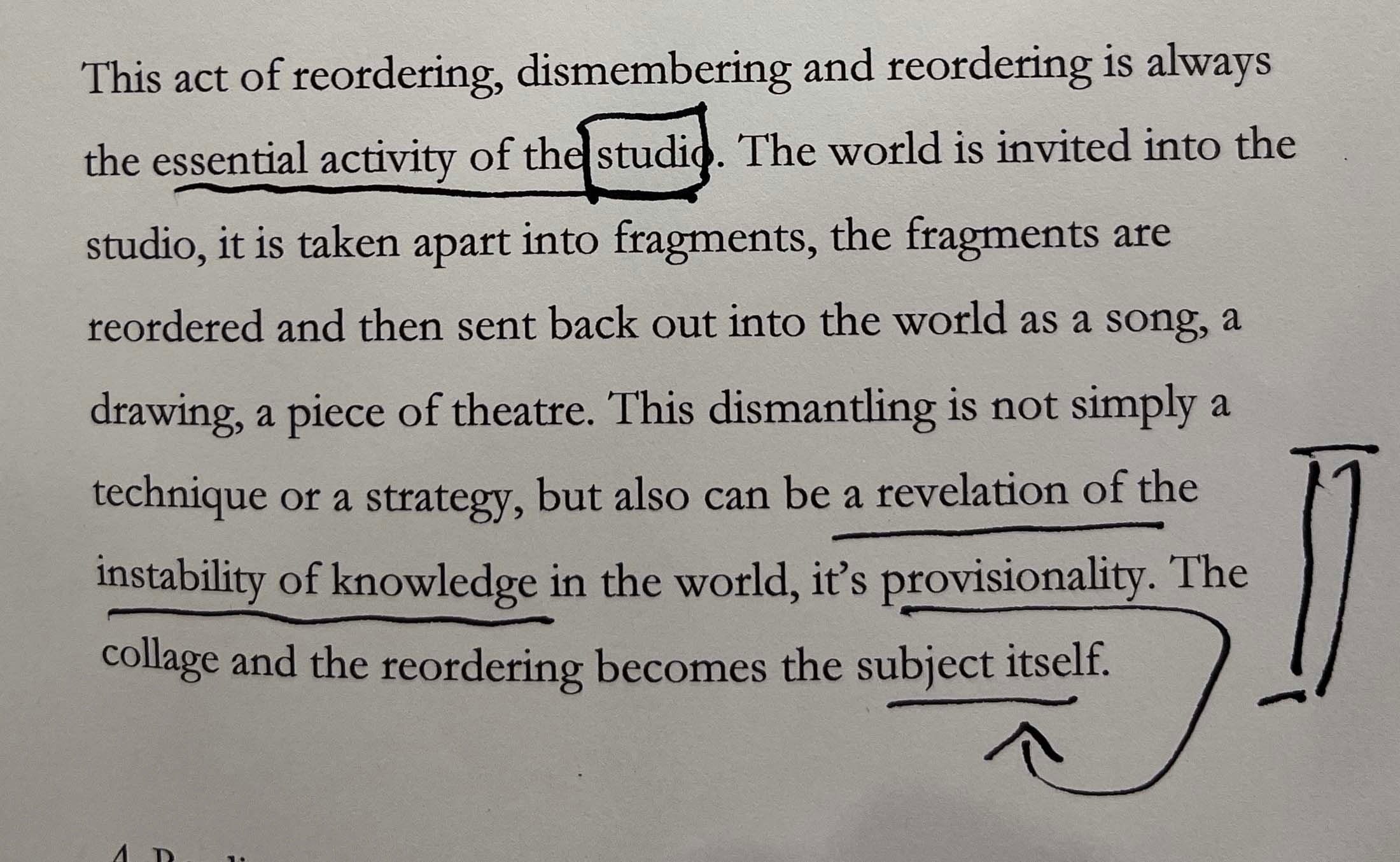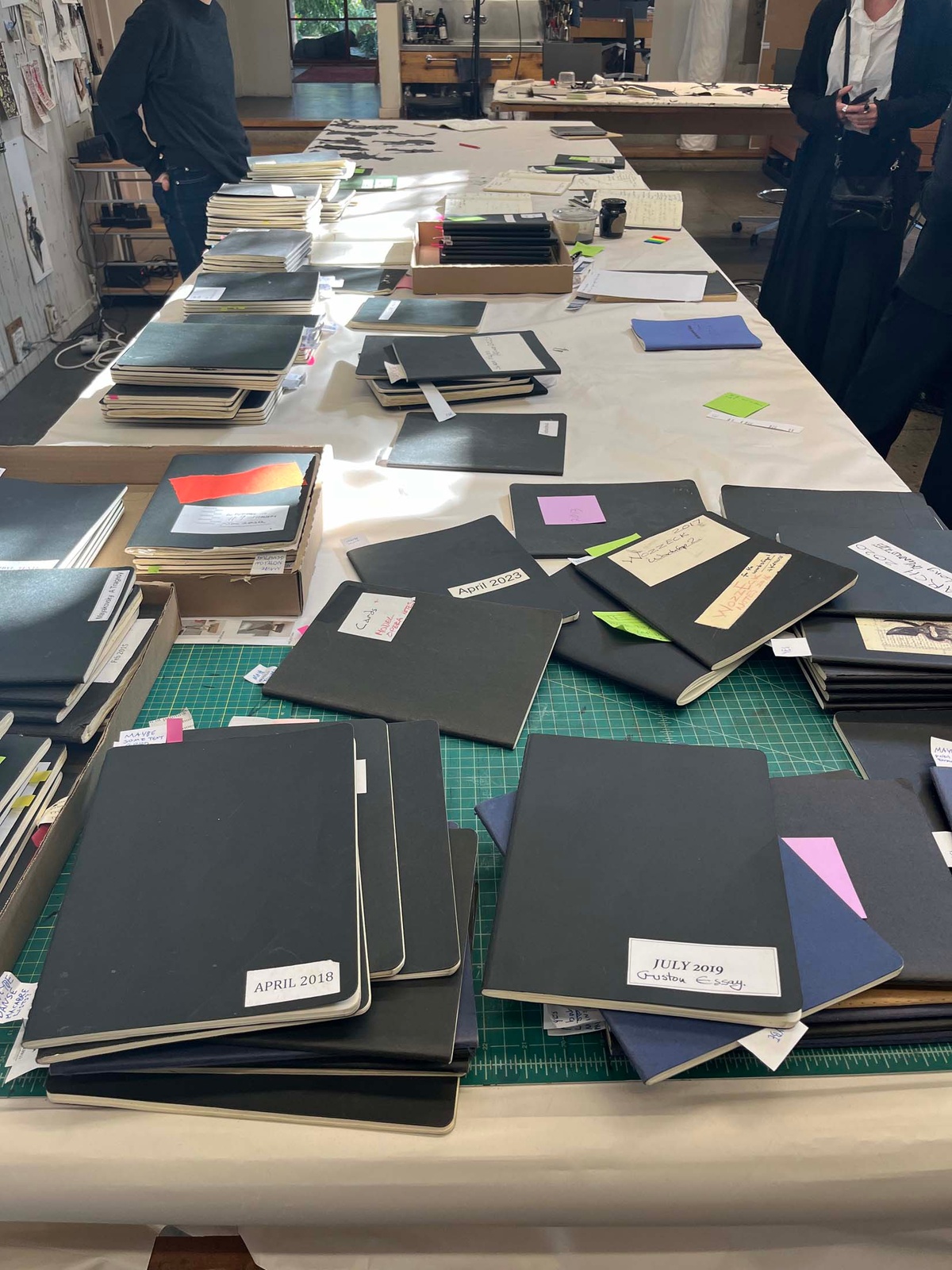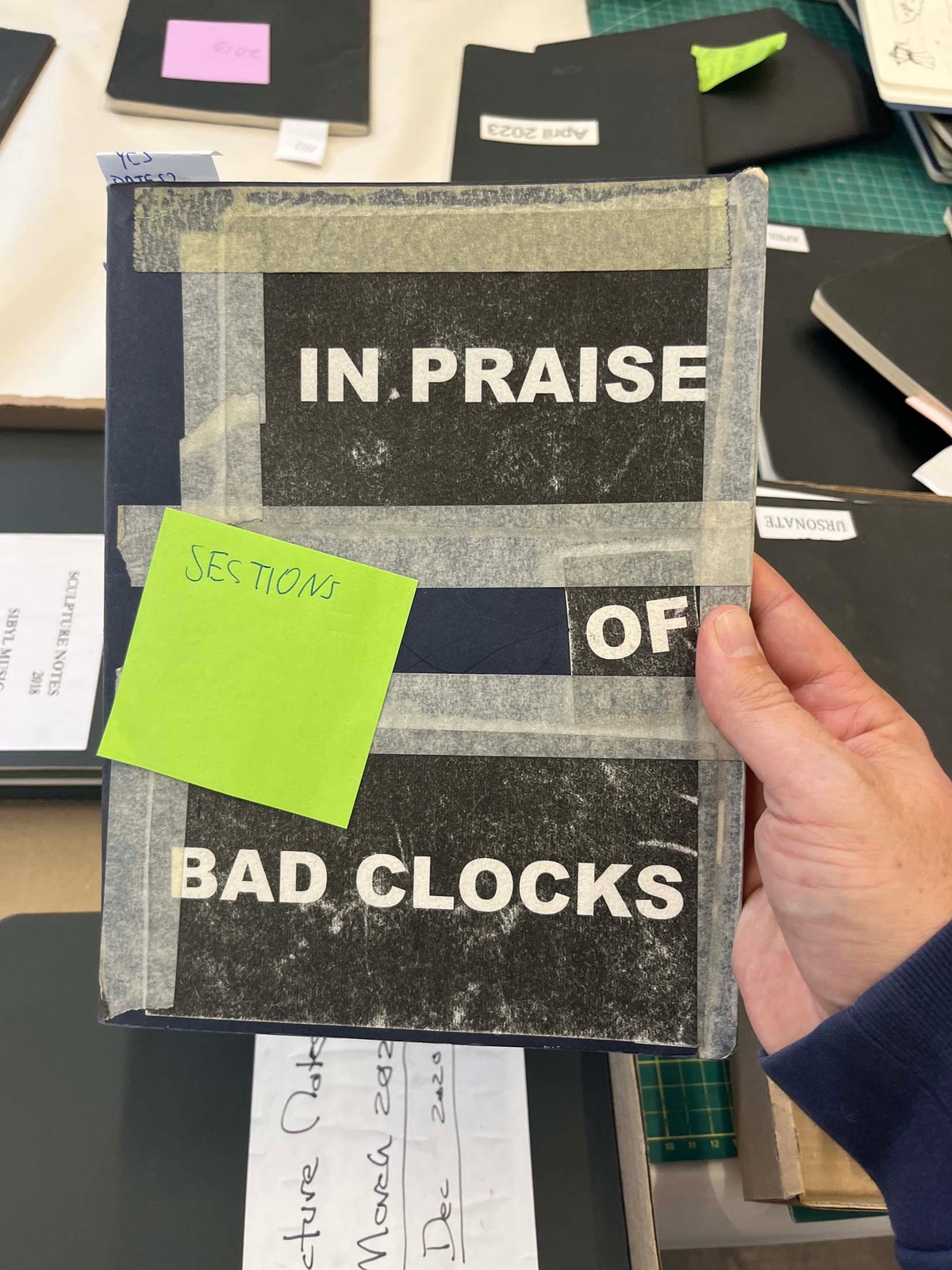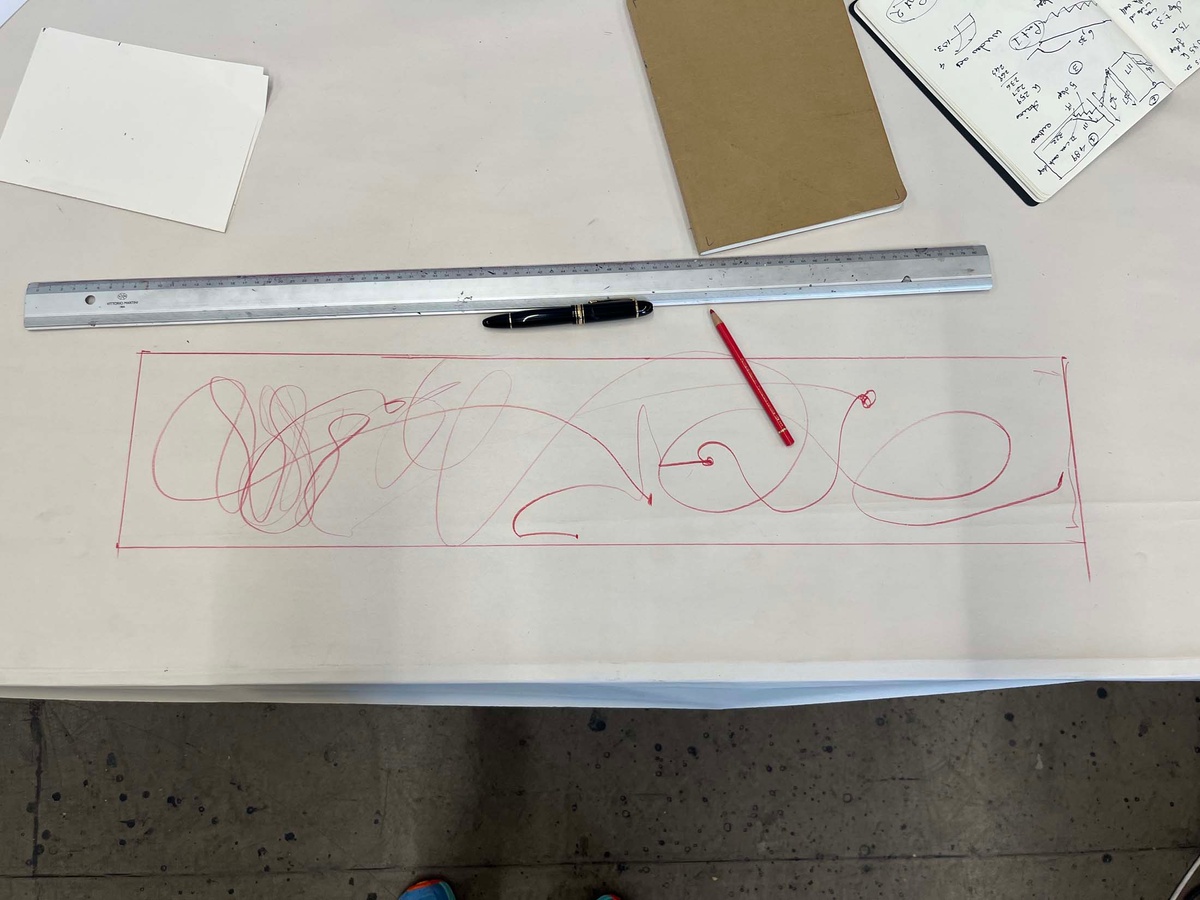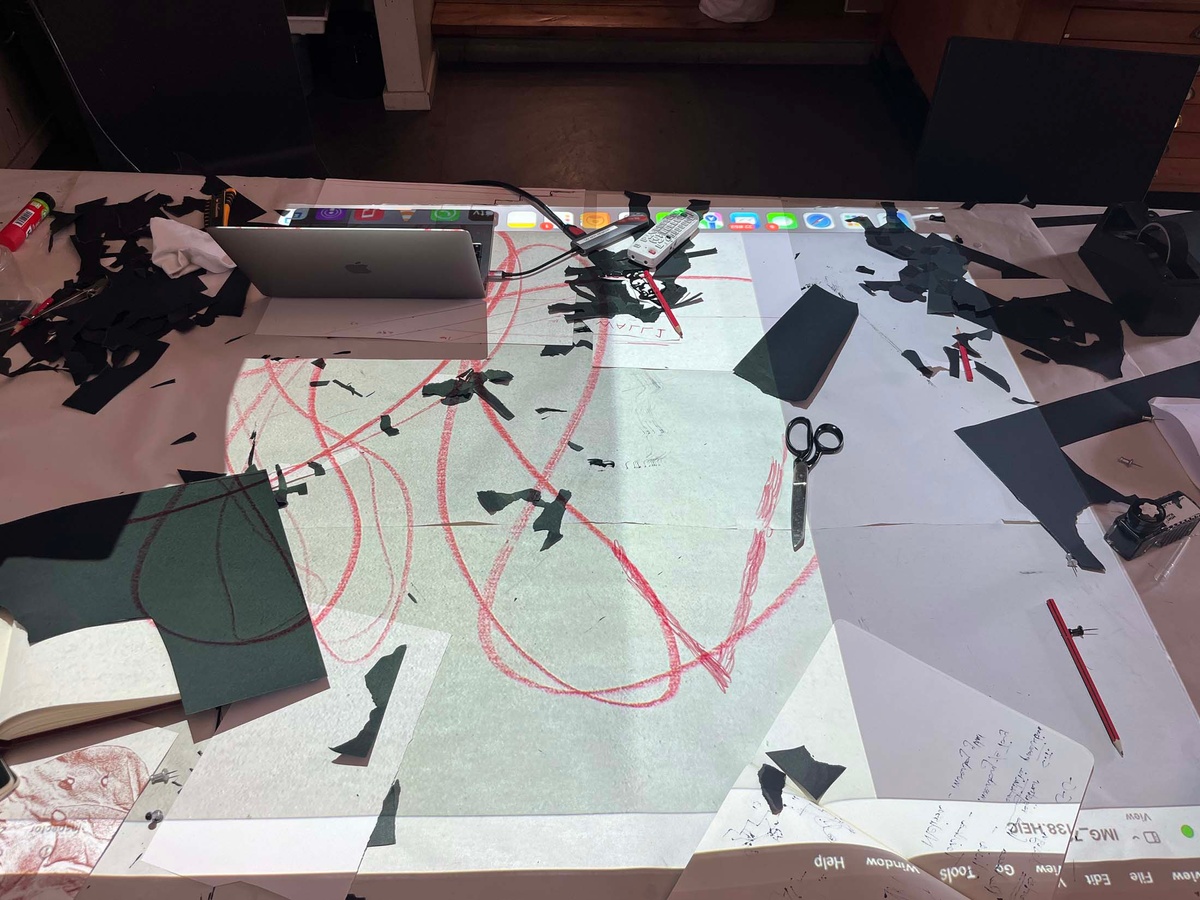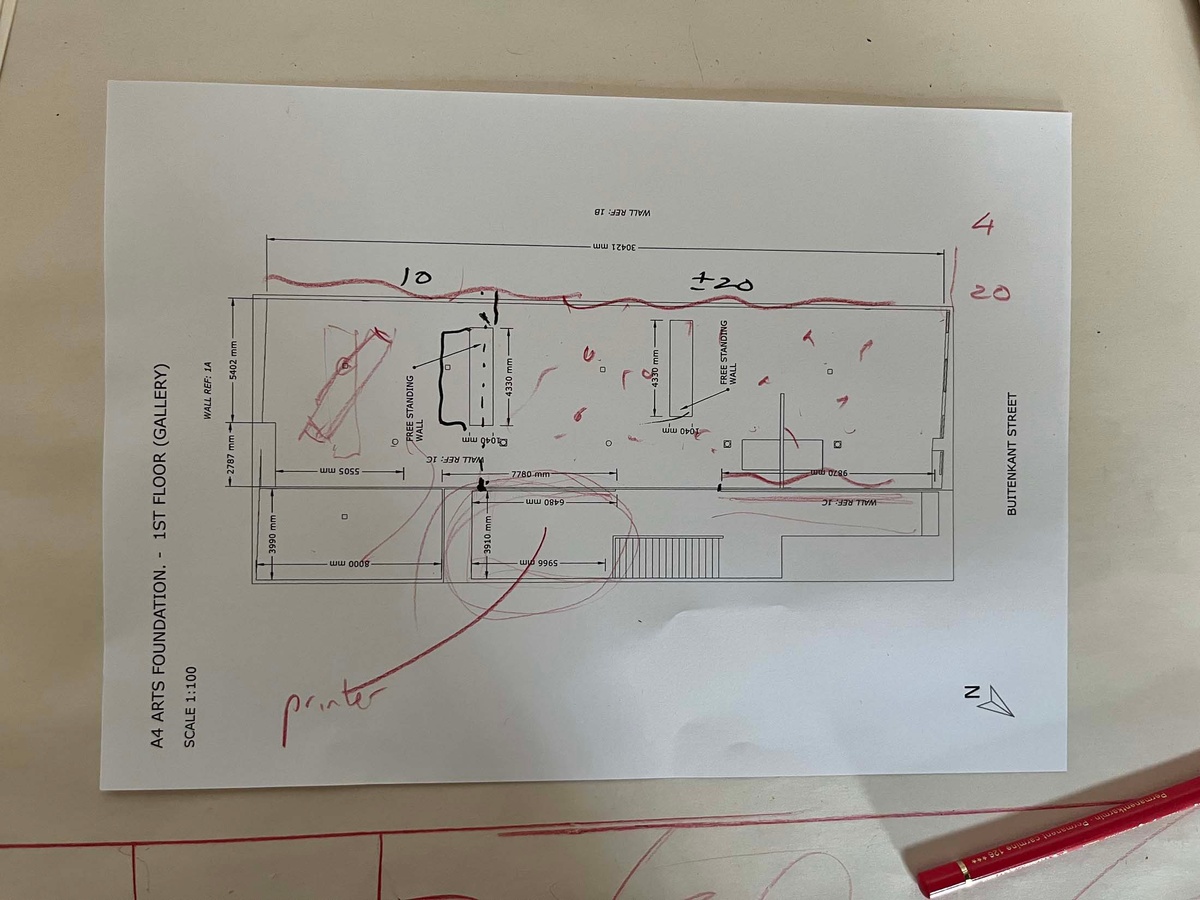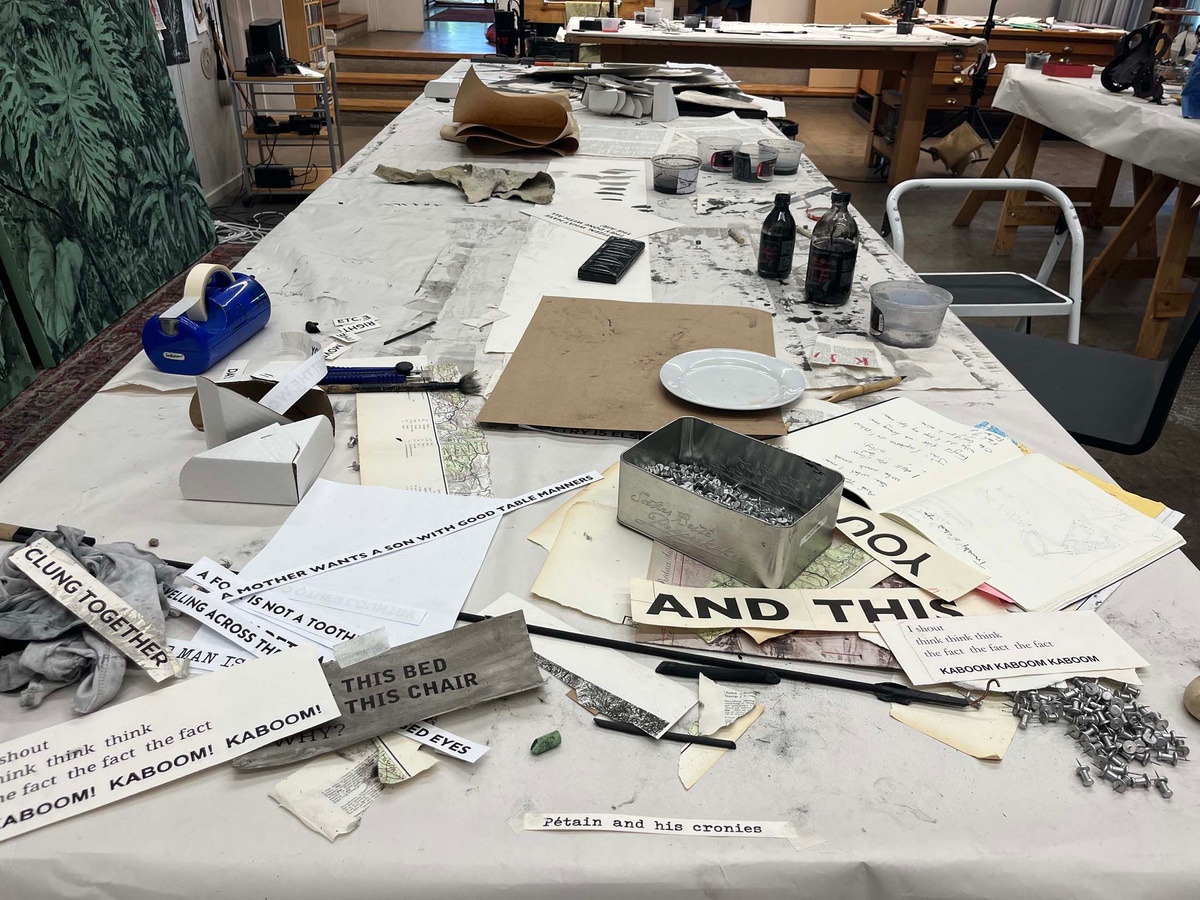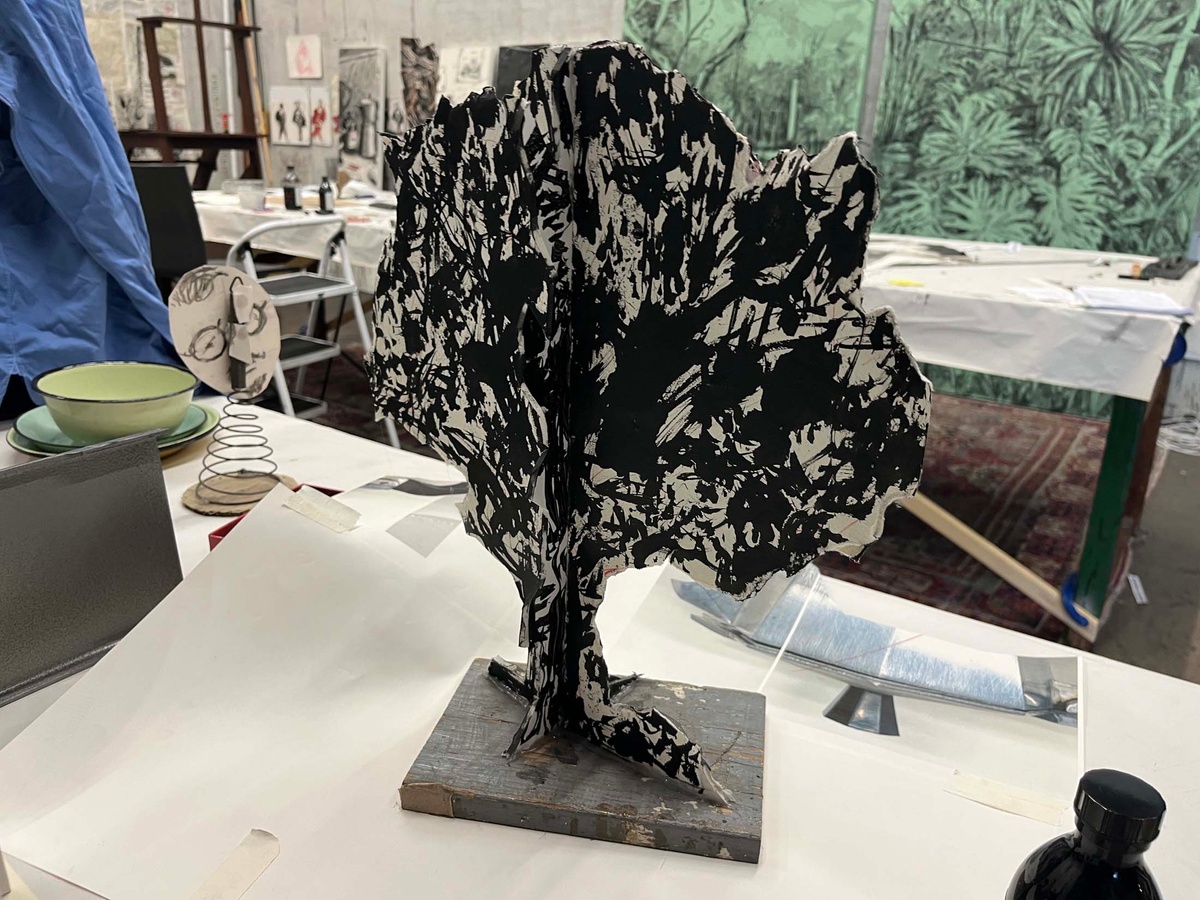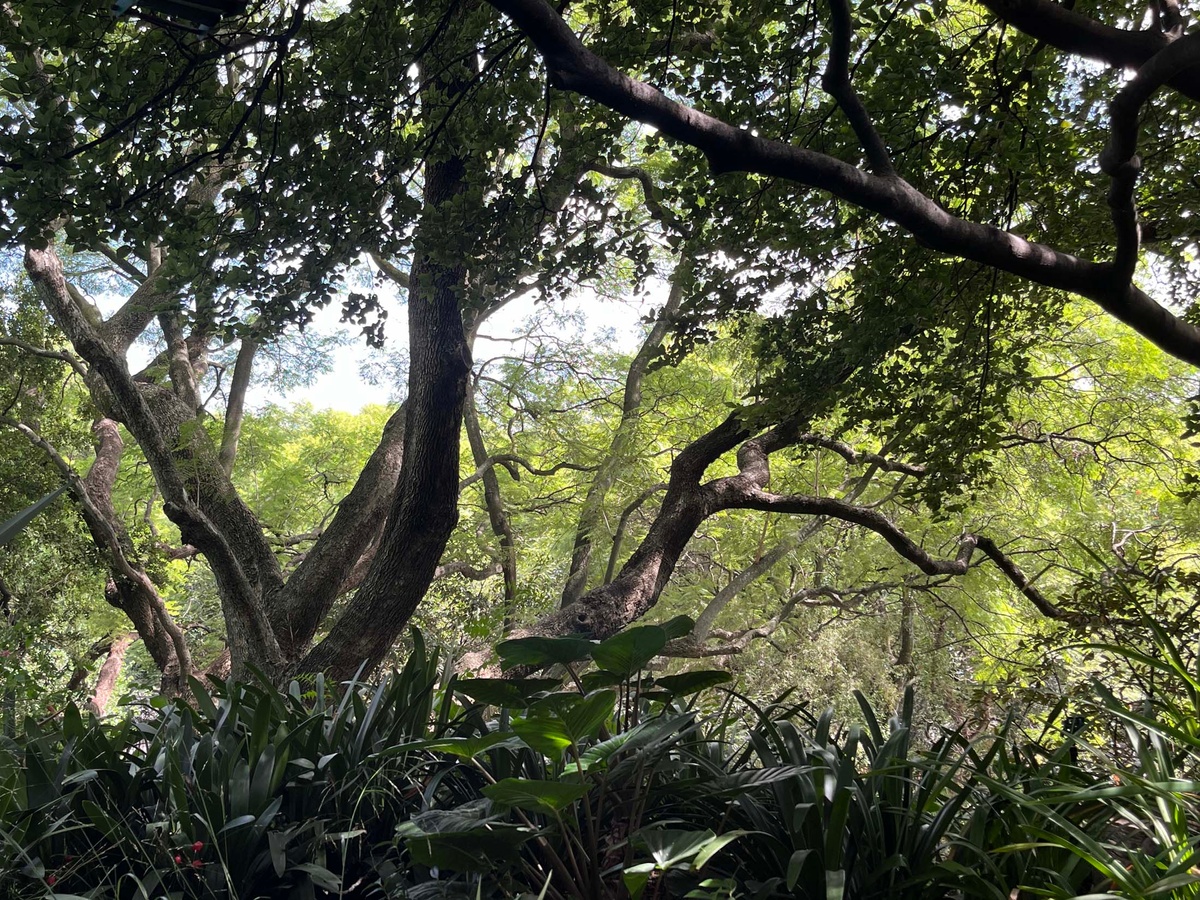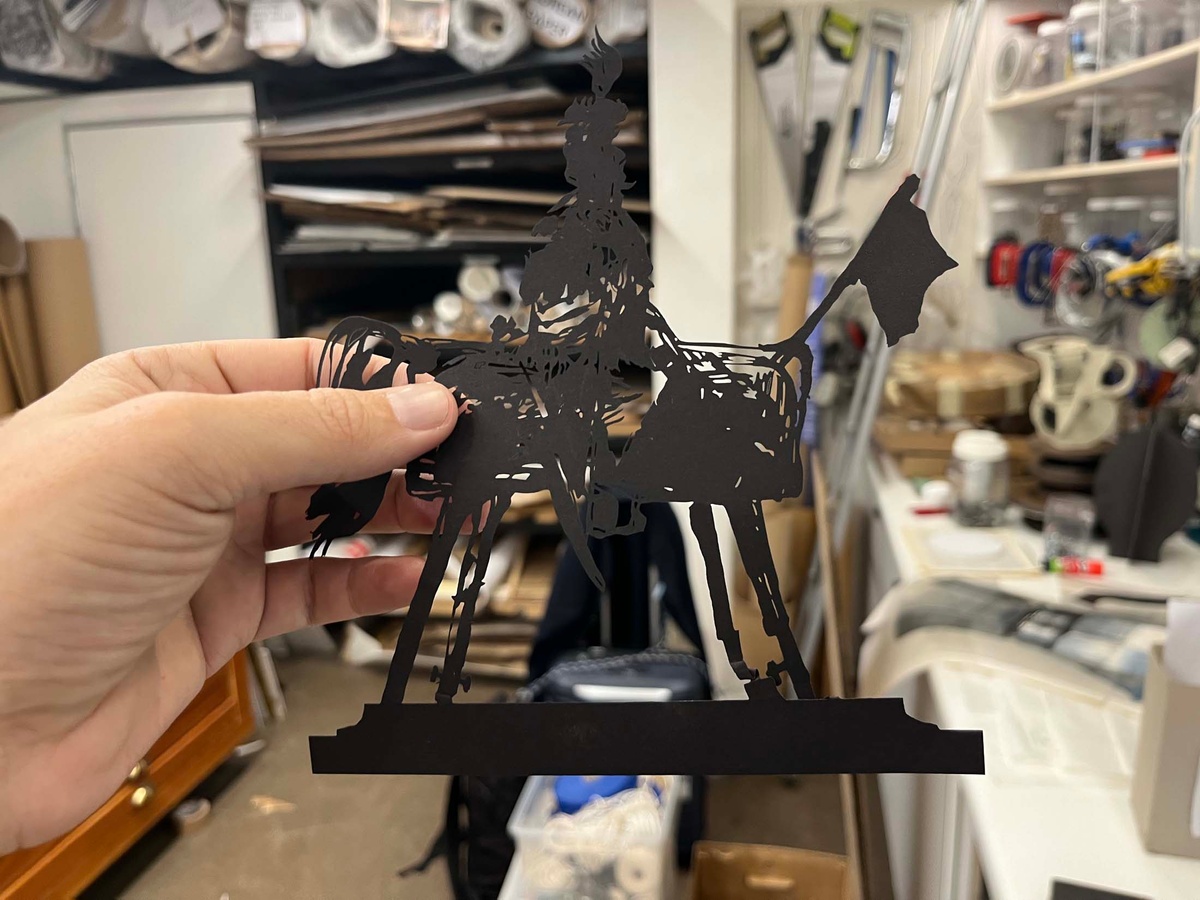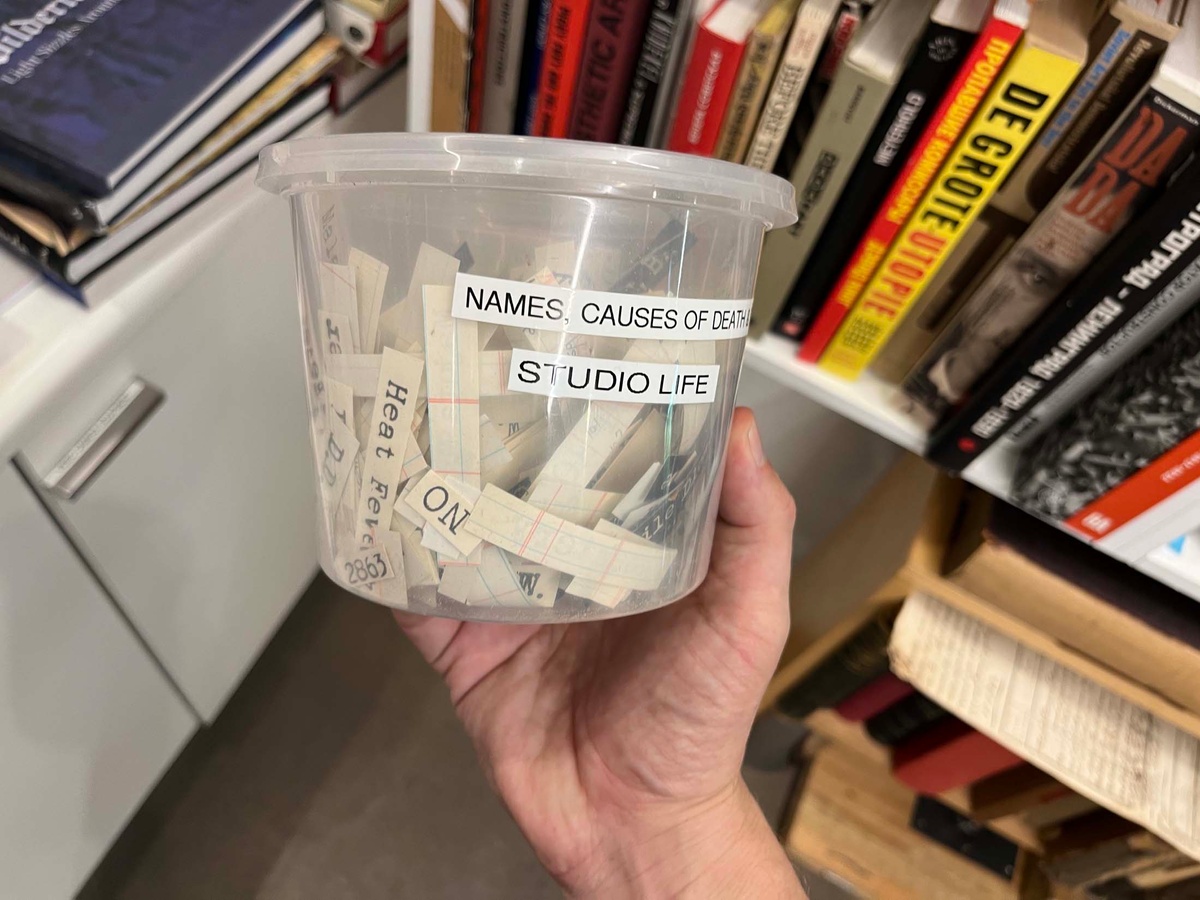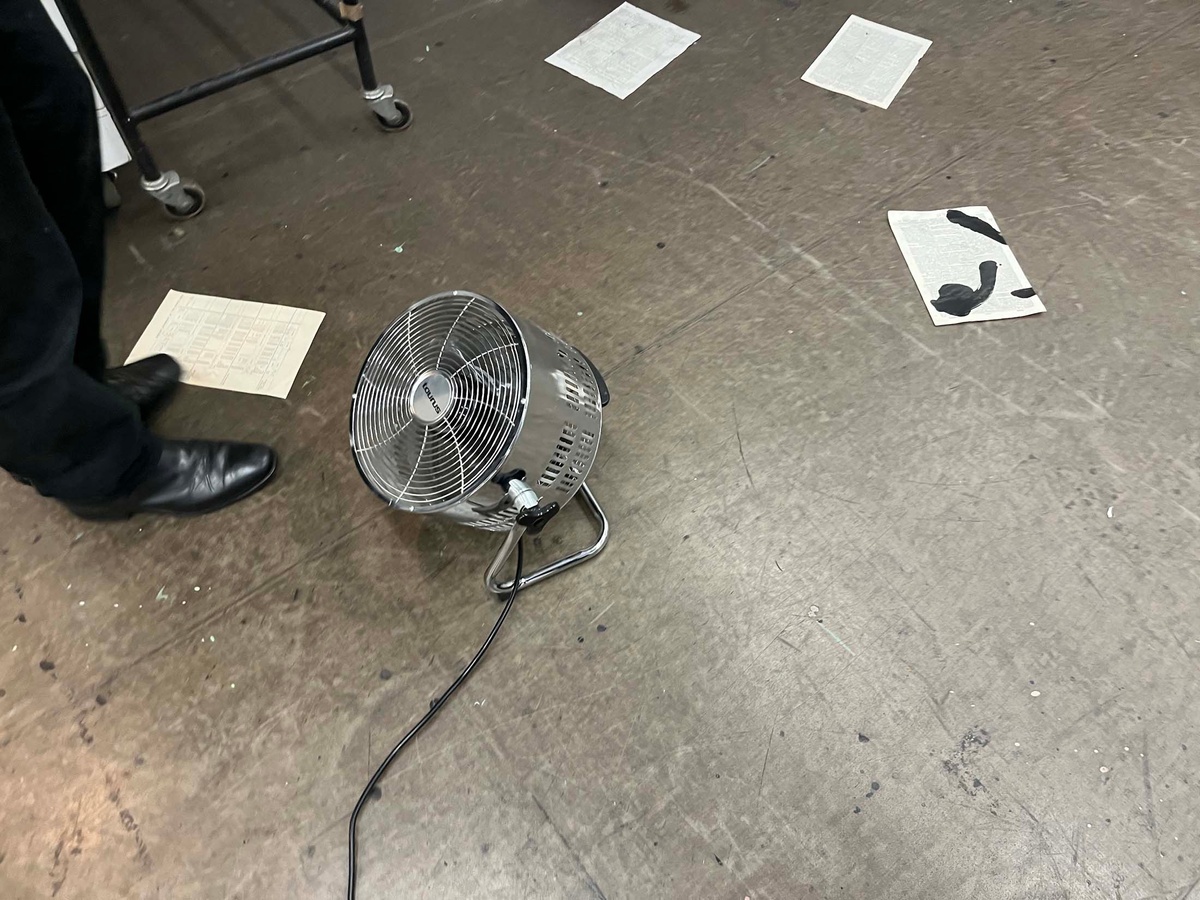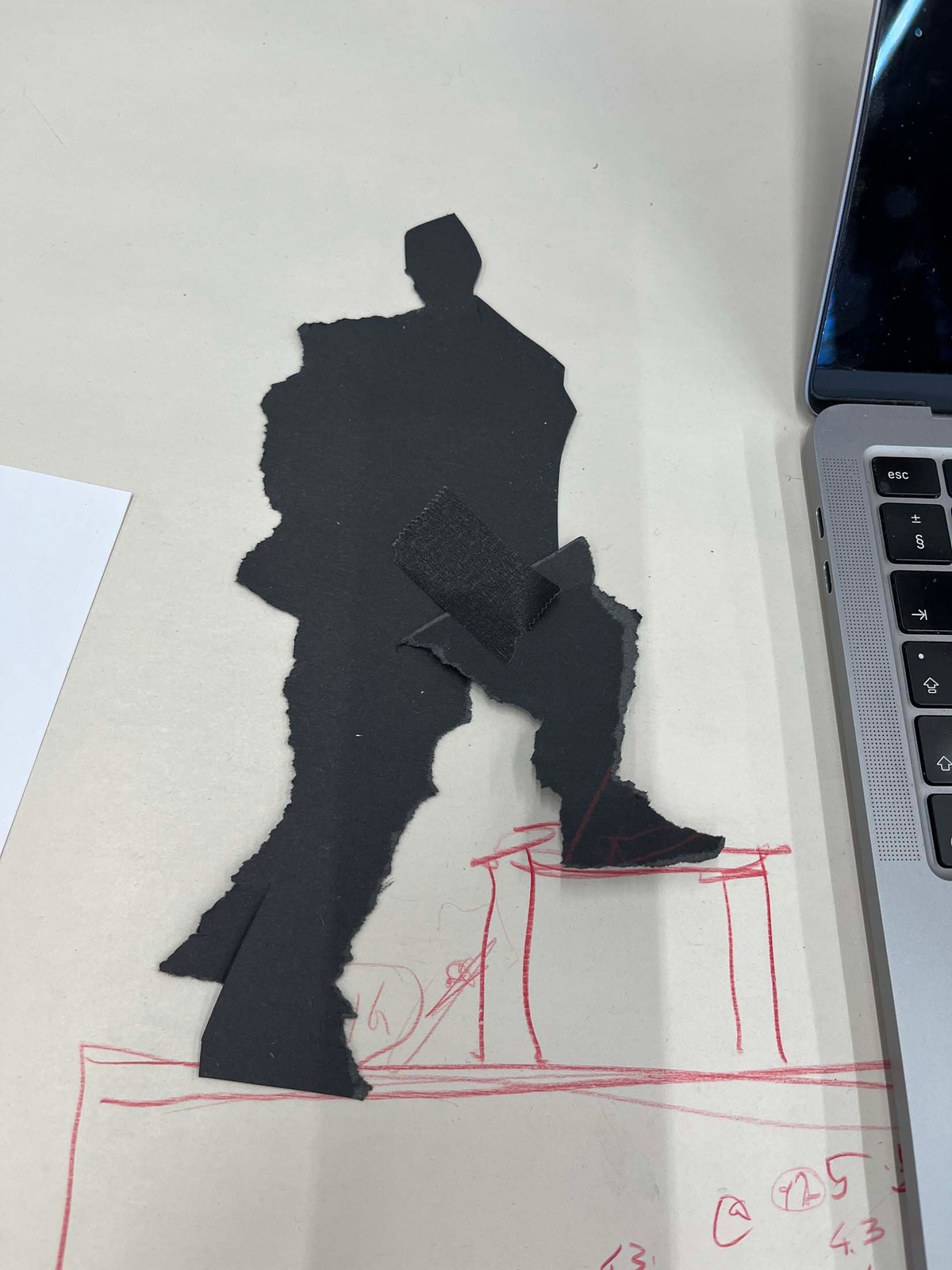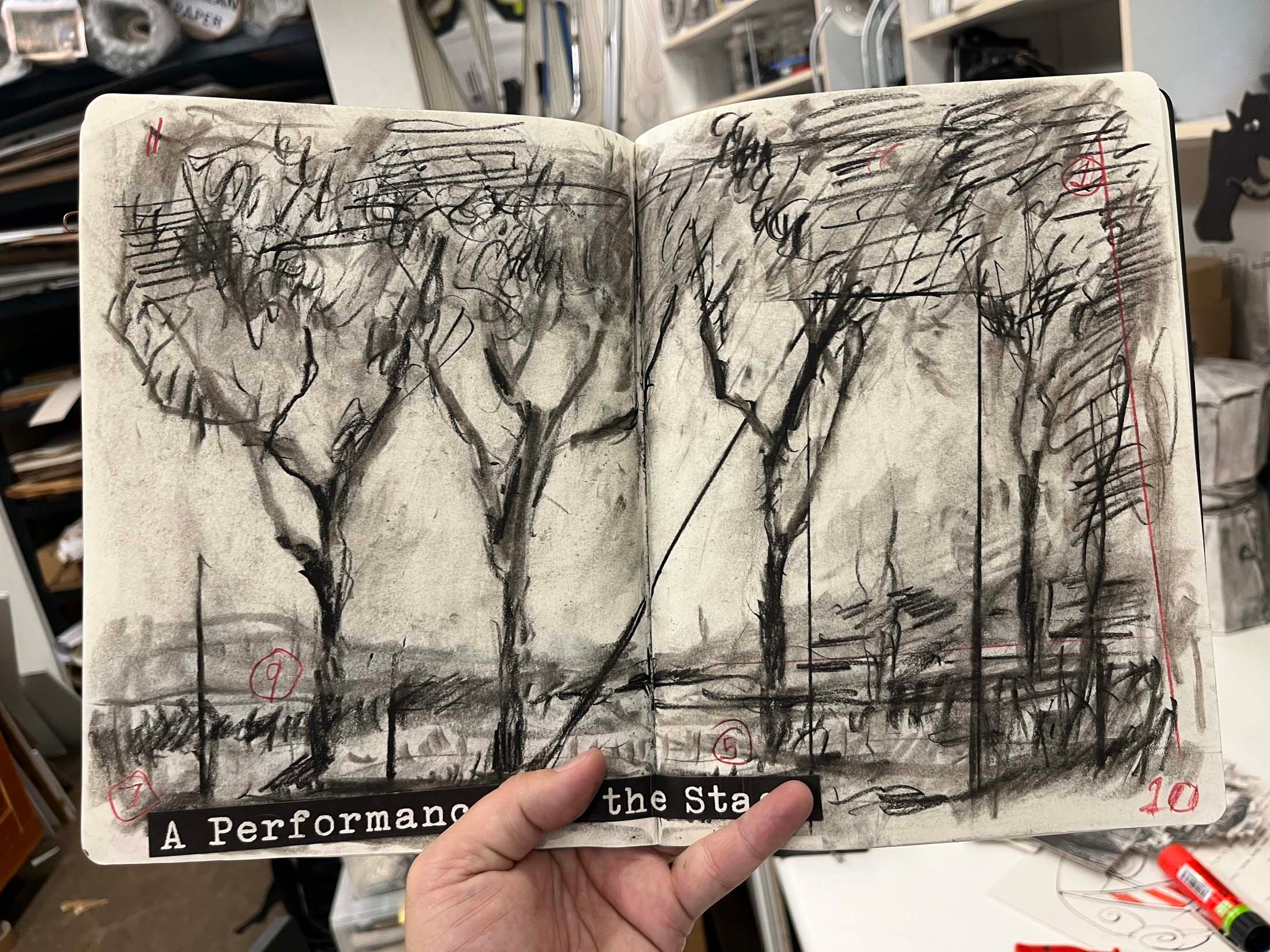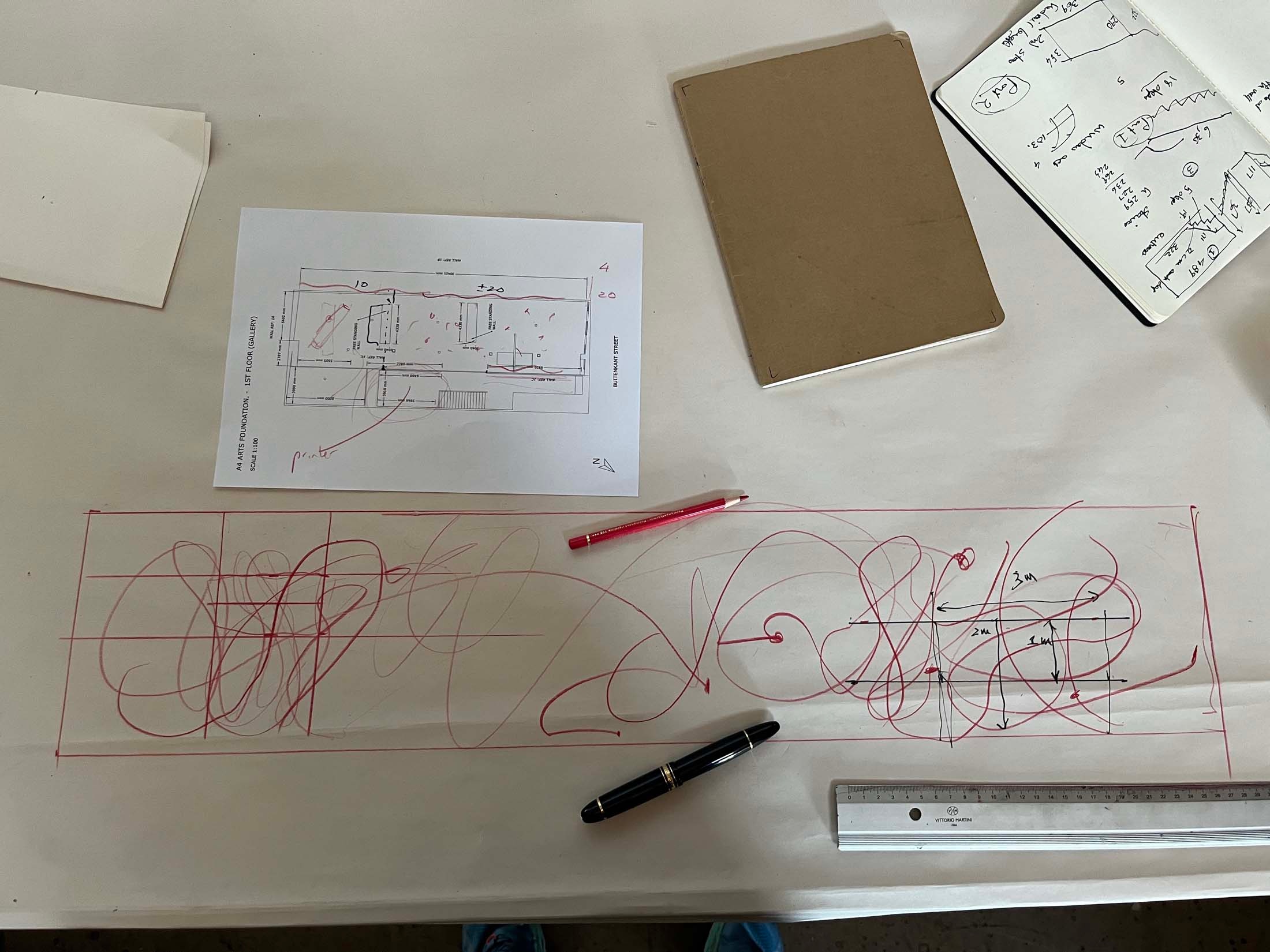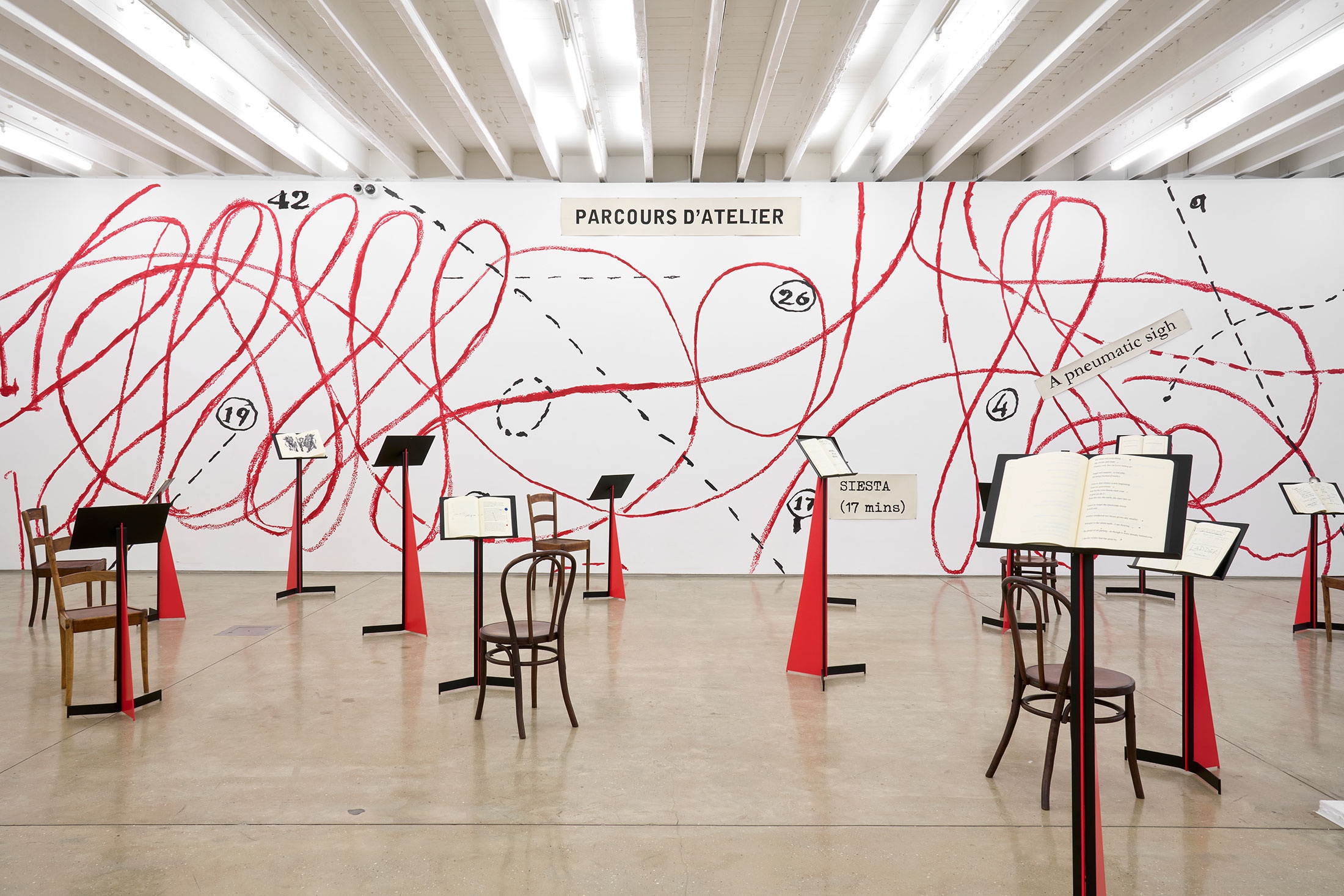
Artist:
William Kentridge
Production:
János Cserháti
Fabrication and installation:
Kyle Morland
Notebook production coordinators:
Jessica Jones
Anne McIlleron
Handpainted wall phrases:
Damon Garstang
Claire Zinn
Parcours d'atelier wall mural:
Keren Setton
Printer programmer:
Mitchell Gilbert Messina
Special thanks to Roger Tatley for his insight and expertise and to Goodman Gallery for their engagement and for providing transport and transit insurance for the artworks.
Artworks, phrases, and studio ephemera are courtesy of the artist.
Notebooks printed by Pulp Paperworks, Johannesburg, on Arena Ivory 70gsm
Presenting a browsable selection from William Kentridge's studio notebooks, History on One Leg is interested in Kentridge's studio tools, routes, detritus and projections. Resting on things like music stands in A4's gallery, the notebooks offer themselves to be read or deciphered. As a vital part of the artist's studio process, their pages are a place for 'thinking forwards', where sketches, scores, diagrams, lists, and phrases appear. Unlike a diary, the studio notebook is rarely a site for retrospective action. Propositions are made, things may, or may not, be further developed. For the first time in the artist's practice, the notebook becomes a complete site for work – the place to compose a film, mapped exactly from the notebook's pages and shown in this exhibition.
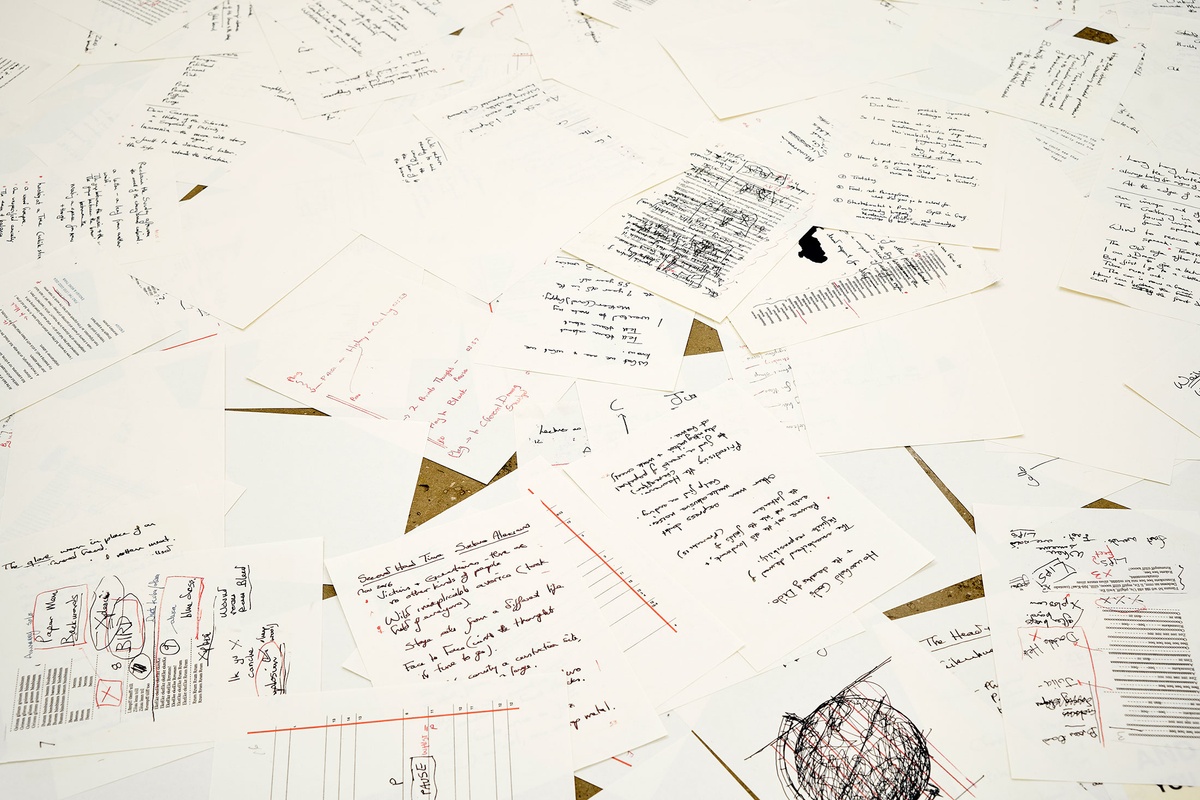
Printer programmed by Mitchell Gilbert Messina
Every two minutes, a page is printed at random from a selection of William Kentridge’s studio notebooks made over the past fifteen years. Pages are collected at the end of the day, fed back into the printer, overprinted – to recycle paper, to establish texture, to layer chronologies and thoughts, to amass like leaves in autumn, to do without a hierarchy of ideas. This process is repeated.
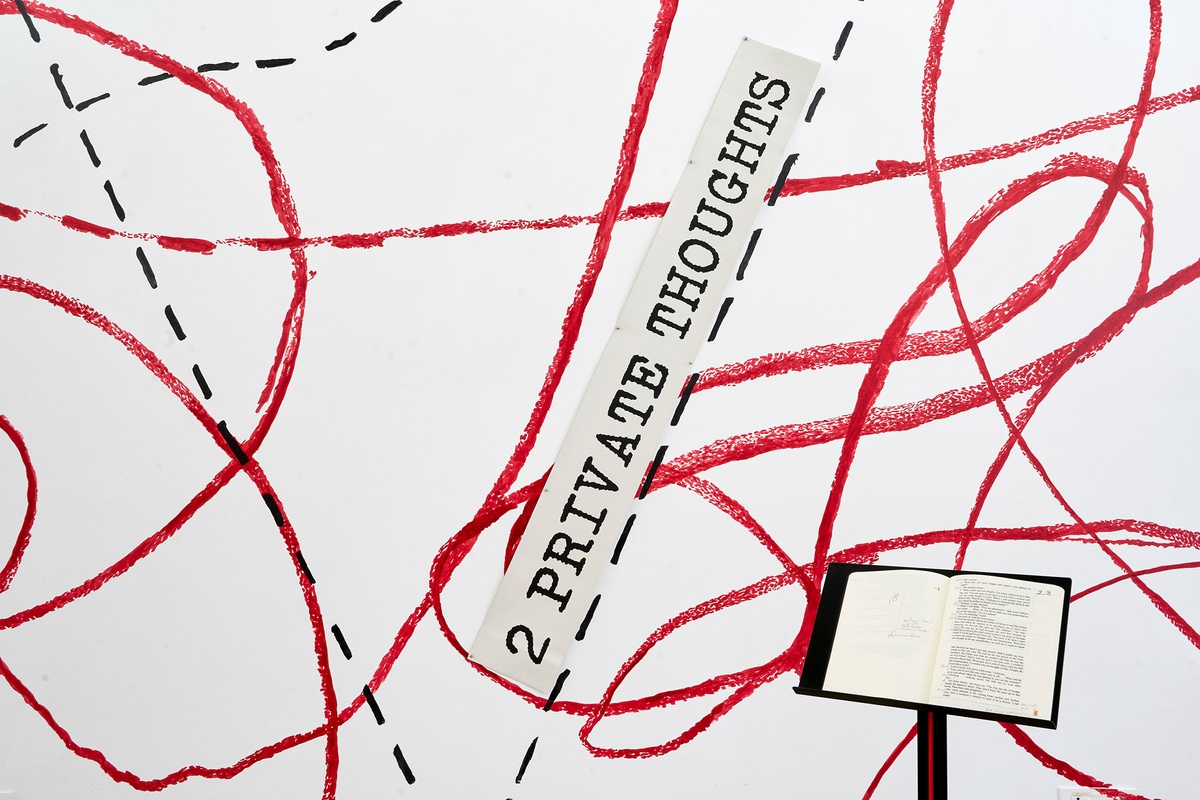
Montana street ink
30.55 m x 3.86 m
Painted by Keren Setton
The drawing is preceded by a walk in the studio, where the walk precipitates the drawing. Notebooks, a vital tool for work in Kentridge’s studio, are filled with such drawings. Where these drawings are propositional, in a conversation with Josh Ginsburg, Kentridge describes the studio walk as the preamble. The wall mural depicts such a path taken in the studio by the artist, walked first, then drawn.
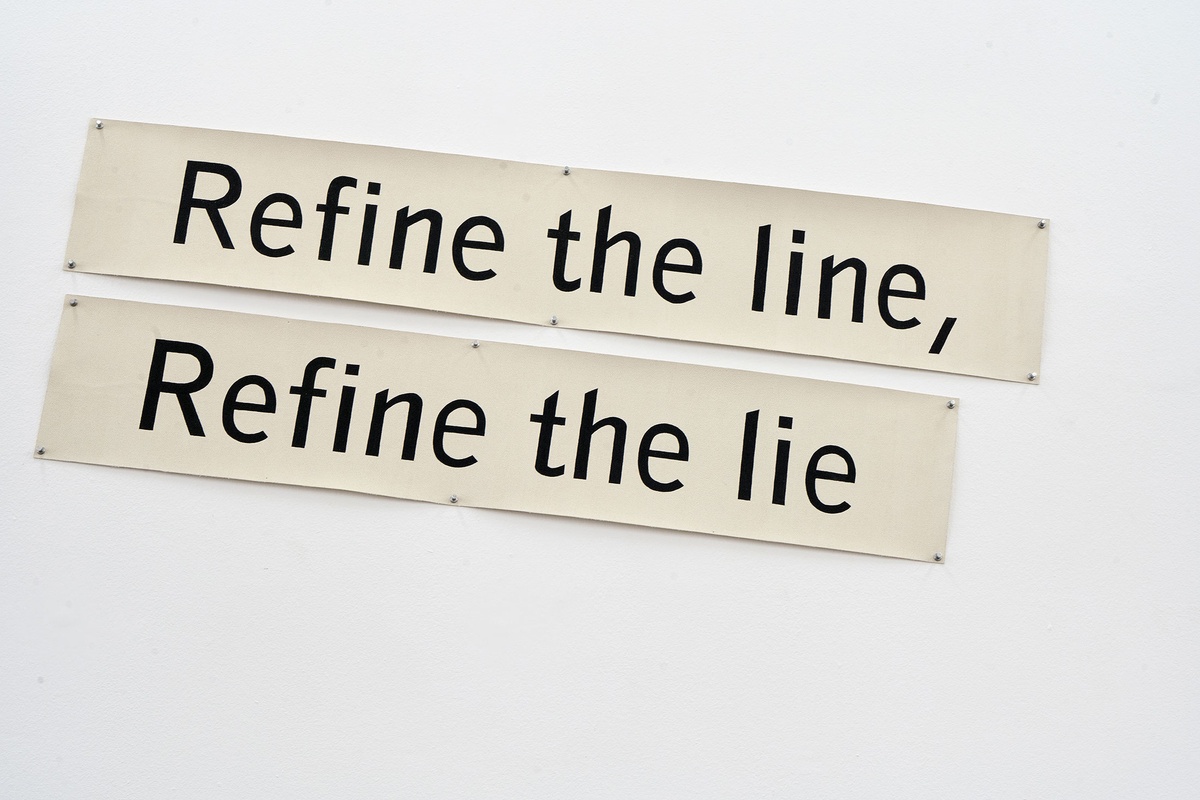
(often recorded in William Kentridge’s Words notebooks)
By Damon Garstang and Claire Zinn
Written phrases recur across Kentridge’s notebooks and projects, appearing as headlines, slogans, rallying cries, warnings, poetic fragments, and obscure invocations – in short, a cacophony. Borrowed from such diverse sources as political manifestos, librettos, and world literature (among countless others), these quotations appear without reference, removed from the fixity of their first context to become wandering signifiers that shape and punctuate the artist’s enquiries.
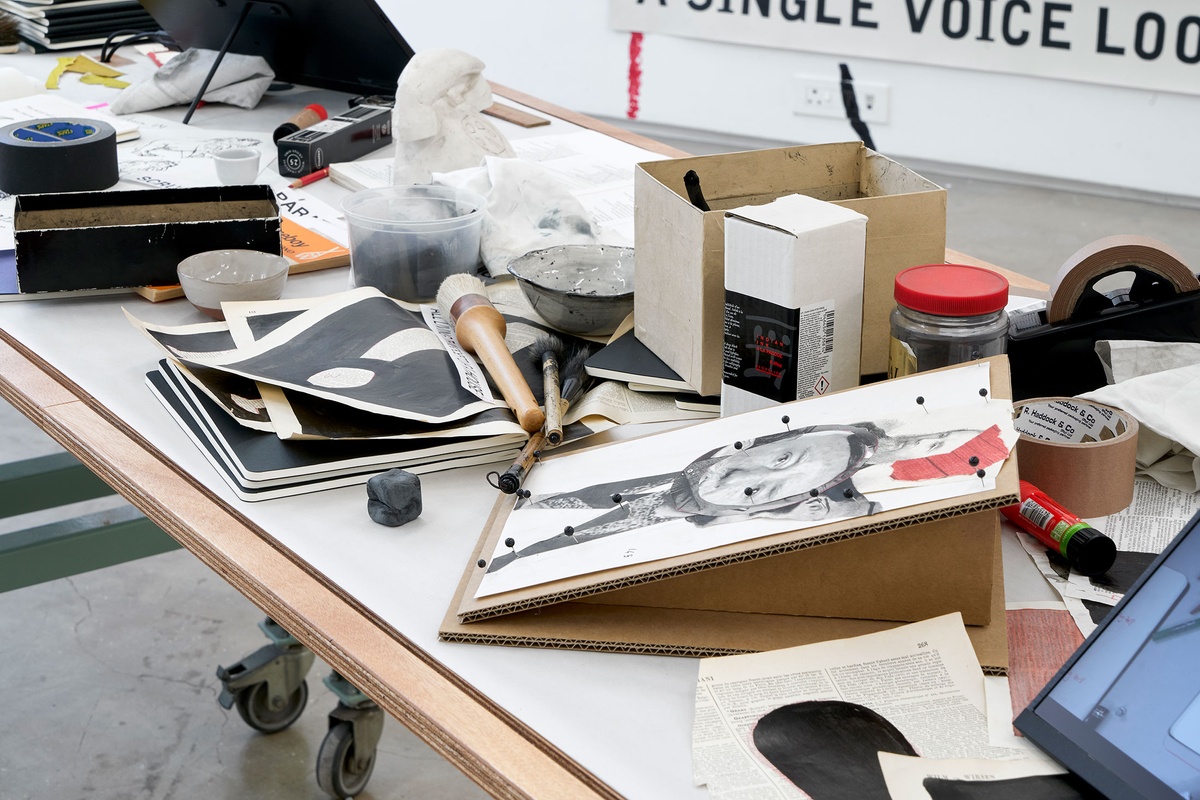
26 studio notebooks; three ‘video fragments’ with accompanying audio (and a fourth played on the landing at the bottom of the office stairs); a found book with ink drawings toward Intoxicating Cash Liquor Cash Sales Book (Sphinx) (2010); the artist’s copy of Houseboy (1956) by Ferdinand Oyono; miscellaneous prints, drawings and paper matter; charcoal powder; pitt charcoal pencils in an open box; loose thick charcoal in a plastic tub; charcoal sticks; an unopened pack of willow charcoal; paint brushes; red pencils; a pencil eraser; assorted tapes; a tape dispenser; glue sticks; steel scissors; metal pincers; a short wooden ruler; a long wooden ruler; a tape measure; aluminium push-pins; bronze weights; small glass pots; a cracked teacup from the Royal Academy; a small grey bowl with twisted wires; a small grey bowl with three pins; an empty box that once held ink; a cotton rag with studio residue; a bolt of calico with note attached; a Bialetti coffee pot; a prop telephone made from plaster of Paris; a Nose maquette (2009); two maquettes for The Great Yes, The Great No (2023).
Video fragments from Studio Life (Notes Towards a Model Opera; notebook for Ursonate; Charmed Life; various), 2020–2021.
Lucienne Bestall
Sara de Beer
Additional notebook research:
Lemeeze Davids
Design:
Ben Johnson
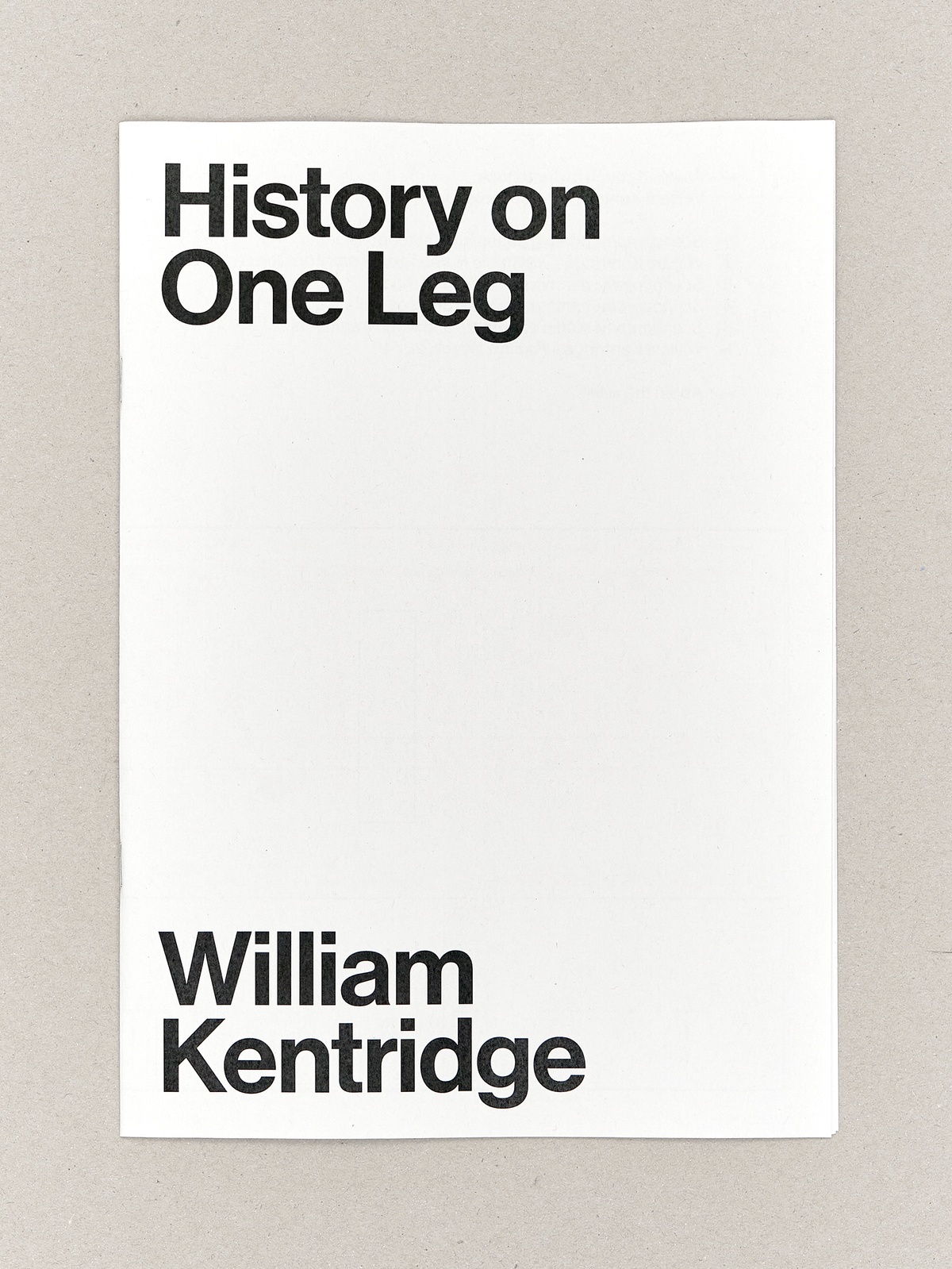
Tracing a studio route through notebooks from William Kentridge’s History on One Leg (2024) at A4. – March 5, 2025
